SPRING 2022
IN THIS EDITION
- The Importance of Masterful Retouching Regardless of Your Skill as A Photographer - Lana Polic
- From True to Life, to Something Beyond Reality - Lillian Lu
- Where Will This Image Potentially Live? - Lisa Langell
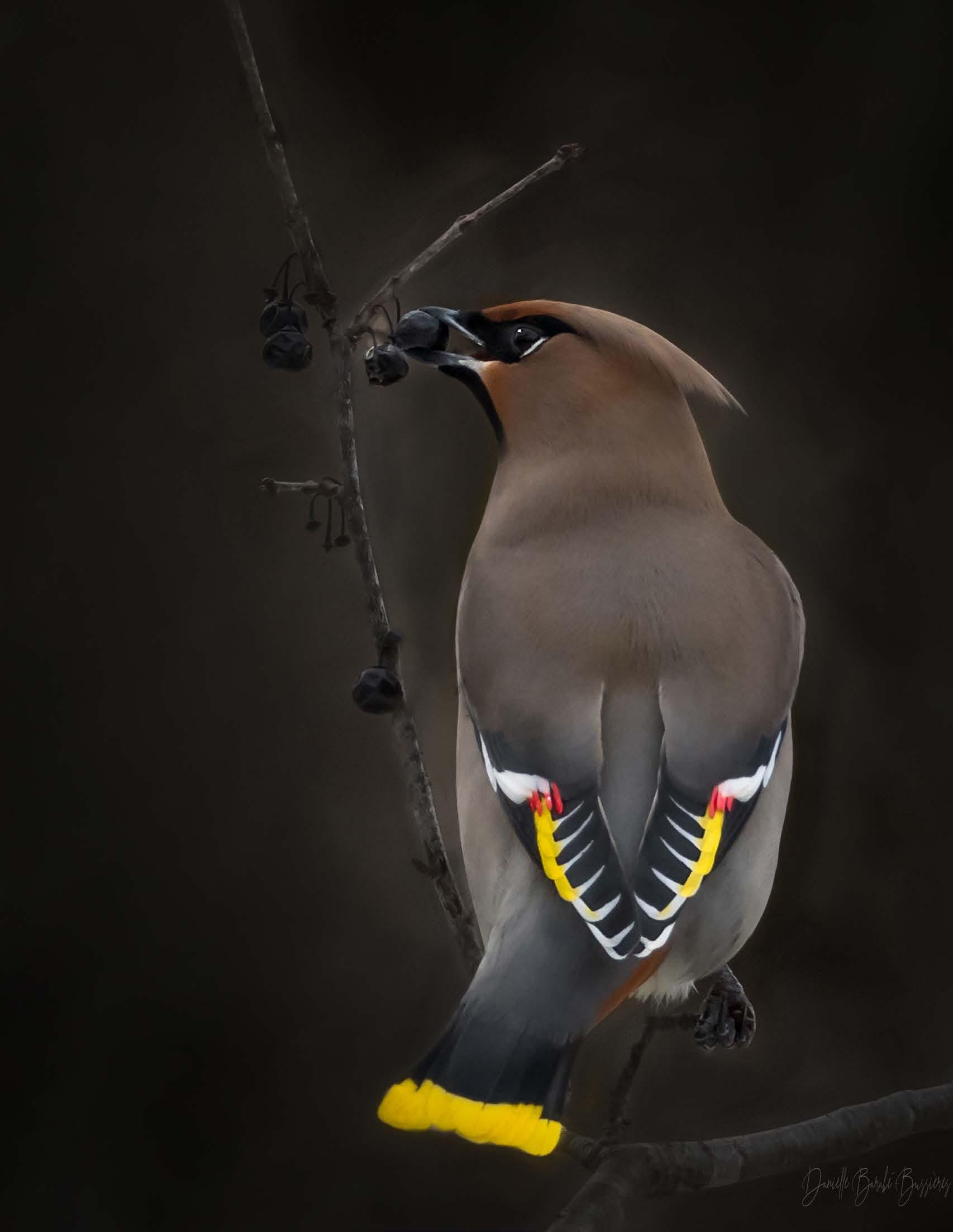
- Five Tips for Lighting that Makes a Difference - Roberto Valenzuela And much much more!
PLUS 2022 PPOC CONFERENCE SCHEDULE
PPOC MAGAZINE
Capturing the great outdoors? Check out our great indoors!




There’s nothing like a change in seasons to spark some creative inspiration, and no better season than summer to step outside, focus your senses and soak it all up. It’s also the perfect time to step into your nearest Vistek to see what you’ve been missing.
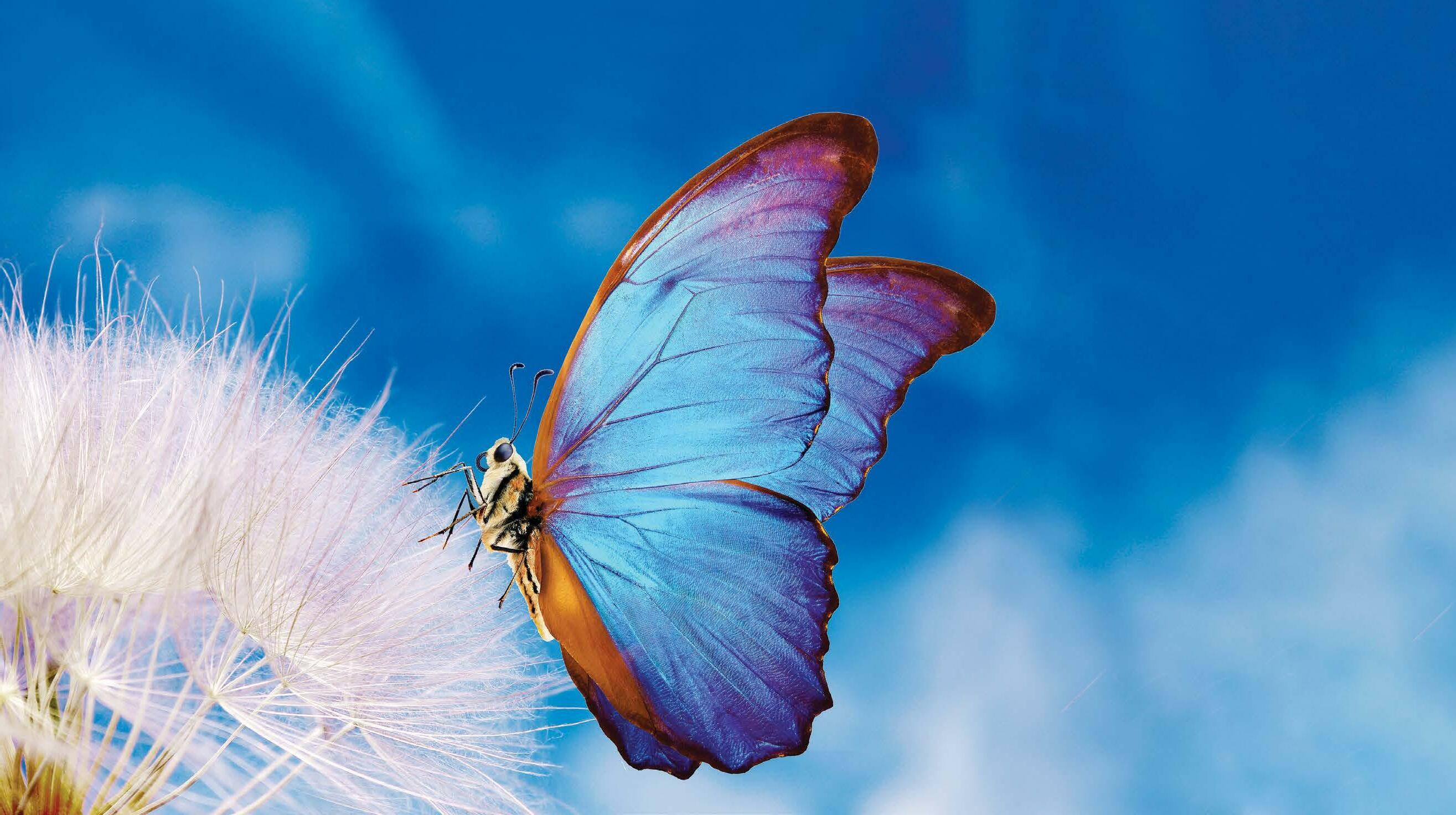
Professional image makers like you have been coming to Vistek stores across Canada for more than 40 years because you know this is where you’ll find the latest gear from brands you often won’t see anywhere else. You also know that this is where you can consult with a sales team of seasoned experts who not only understand these product lines better than anyone but also your individual needs better than most.



That hasn’t changed, of course, but the big news is that we’ve recently completed extensive renovations at our flagship stores in Toronto and Calgary, featuring a cutting-edge interior design crafted to create a whole new shopping experience. At these locations, you can now step onto an open-concept retail floor and see the full range of available gear at a glance, with more accessible product showcases and dedicated spaces that offer a genuine hands-on experience.
No matter where you shop at Vistek, we’re looking forward to seeing you inside our stores before you step back outdoors.
SPRING 2022 | GALLERIE MAGAZINE | 2 TORONTO • MISSISSAUGA • OTTAWA • CALGARY • EDMONTON VISTEK.CA PHOTO | VIDEO | DIGITAL | SALES | RENTALS | SERVICE
TABLE OF CONTENTS
4 Message from the Chair
6 The Importance of Masterful Retouching Regardless of Your Skill as A Photographer
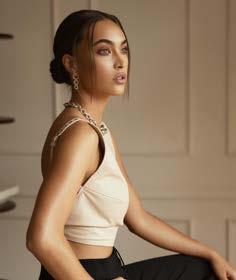 By Lana Polic
By Lana Polic
10 From True to Life, to Something Beyond Reality
By Lillian Lu
12 Where Will This Image Potentially Live?
By Lisa Langell
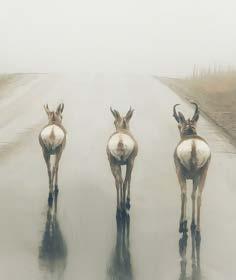
16 2022 Virtual Conference & Expo Schedule

20 Improve Your Portrait Photography: Lighting with Bounce Flash
 By Niel van Niekerk
By Niel van Niekerk
22 Making a Profit with Your Artwork
By Danielle Barabé-Bussières, MPA
26 Call Me a People Photographer
By Richard Terborg

29 Preparing and Submitting Images for PPOC Image Competitions
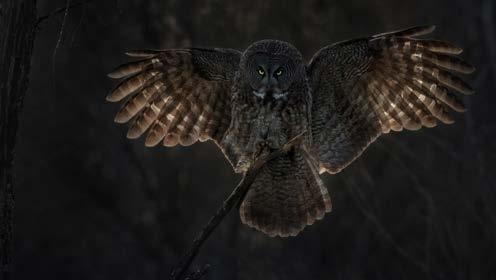 By Charles van den Ouden, HLM, MPA, SPA
By Charles van den Ouden, HLM, MPA, SPA
30 Allow Yourself Space to Be Uncomfortable
By Renée Robyn

32 Five Tips for Lighting that Makes a Difference
By Roberto Valenzuela,
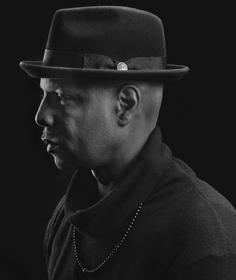
Canon
36 About the Cover
Explorer of Light
By Danielle Barabé-Bussières, MPA
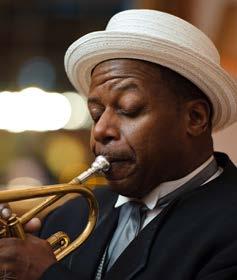
37 My PPOC
By Kayla Gordon
SPRING 2022 | GALLERIE MAGAZINE | 3 10 12 4 30 26 22 20 6 32
MESSAGE from the Chair
Education. Learning the basics of lighting, posing, composition and all of the technical skills that allow you to be a successful photographer. Being knowledgeable and practical in how you approach your craft. Using that knowledge to solve problems, be more creative and offer your clients new and changing ideas to improve your image making. This is one of the cornerstones of professionalism.
As we progress in our careers, continuing education is, in my mind, even more critical. It allows us to keep up to date, to keep us inspired, to learn new techniques to learn from other successful photographers and to constantly change and improve our craft.
This is what Canadian Imaging (CICE) is all about. For some it will be about learning the basics. For others it will be about getting inspired and learning something new. Regardless of your starting point there is a wonderful variety of speakers that should satisfy everyone. This issue will give you more details about the speakers, the topics they will address and the learning opportunities you can expect.
We would all like to gather in person for our Annual conference. Given the recent decrease in Covid numbers and the lifting of gathering and masking restrictions, I am hoping this is the last time we have to “gather” virtually. However, for a virtual event, the PheedLoop platform used in November 2021 for the Alberta/ BC LightMatters Conference has proven to be a great platform for this type of Conference. Not only a way to see all of the presentations but also a great way to interact with our sponsors and vendors. There are also ways for us as attendees, to gather, interact and socialize during the Conference, a time to connect with our fellow members and photographers from across the country. Personally, I am looking forward to the learning opportunities and the chance to “see” you all in April
I am looking forward to this issue that previews all of the exciting content coming up during Canadian Imaging. Enjoy this issue of Gallerie Magazine and enjoy Canadian Imaging.
Ross Outerbridge, MPA PPOC Chair

GALLERIE IS THE PREMIER MAGAZINE FOR PROFESSIONAL PHOTOGRAPHERS ACROSS CANADA. EACH ISSUE FEATURES AWARDWINNING IMAGES, EDITORIAL INFORMATION, TECHNICAL AND FEATURE ARTICLES, ADVERTISING, AND MEMBER SERVICES. ALL PHOTOGRAPHERS ARE WELCOME TO VIEW THE DIGITAL VERSIONS ON OUR WEBSITE.
GALLERIE is published three times annually;
- Winter (online issue)
- Summer (print and online)
- Fall (online issue)
SUBSCRIPTION
All PPOC members receive the printed issue directly to their doorstep. Online issues are available to all photographers.
To be added to our email mailing list please contact the PPOC office (info@ppoc.ca) indicating your province of residence. Additional printed copies of Gallerie are $6.95, plus postage. Please contact the PPOC Office.
SUBMISSIONS
Articles and member stories are welcome, please submit them to the editor for consideration.
ADVERTISING
One single advertising package will secure your ad space in all three issues for the year.
Double Page Spread $1575/year
Full Page Outside Back Cover $1375/year
Full Page Inside Cover $1125/year
Advertising Supplement $1000/year
Full Page $975/year
Half Page $630/year
Quarter Page $400/year
PPOC Trade members receive a 20% discount. To reserve your ad, contact the advertising manager.
EDITOR
Terry Tinkess
e: editor@ppoc.ca
DESIGNER AND COMPUTER GRAPHICS
Josée Talbot, MPA
e: josee@talbotphotoart.ca
ADVERTISING MANAGER
Brad Kelly, MPA
e: ppoc.gallerie.magazine.ads@gmail.com
SPRING 2022 | GALLERIE MAGAZINE | 4
Ross Outerbridge, MPA PPOC National Chair
See page 16-17 for complete schedule
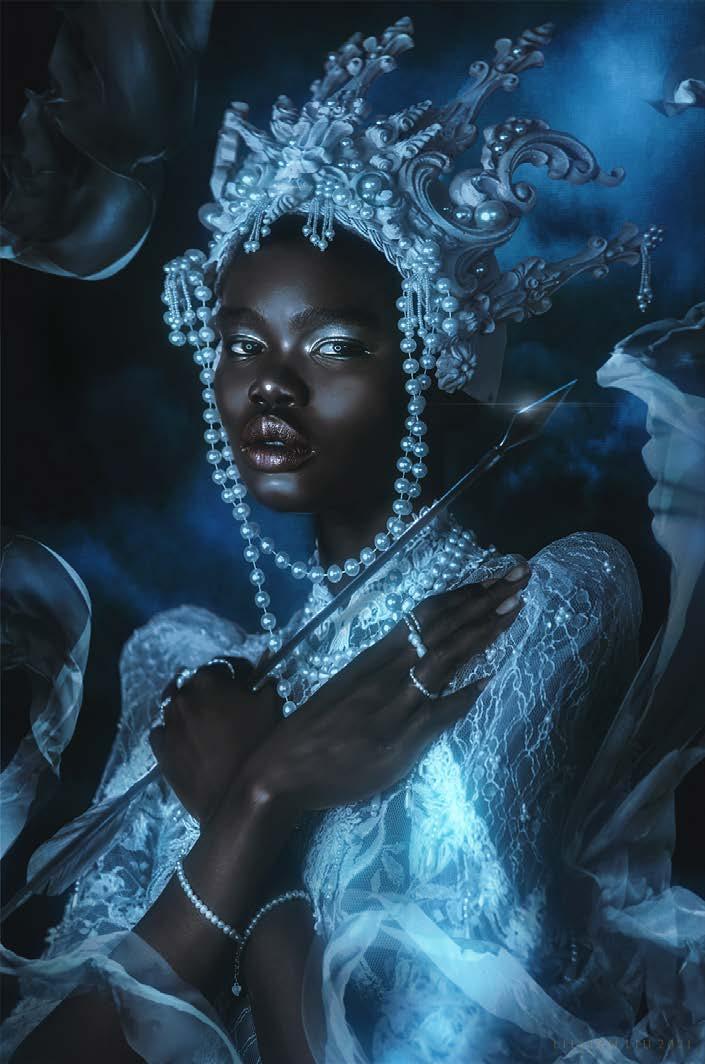
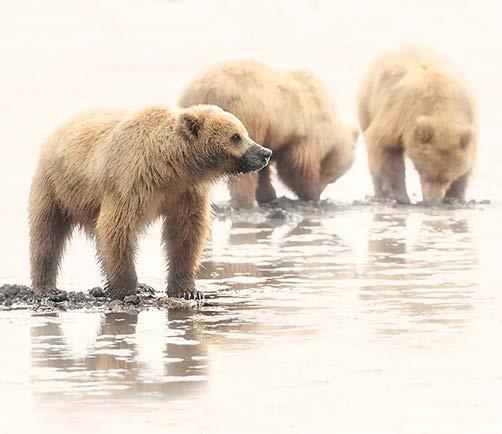
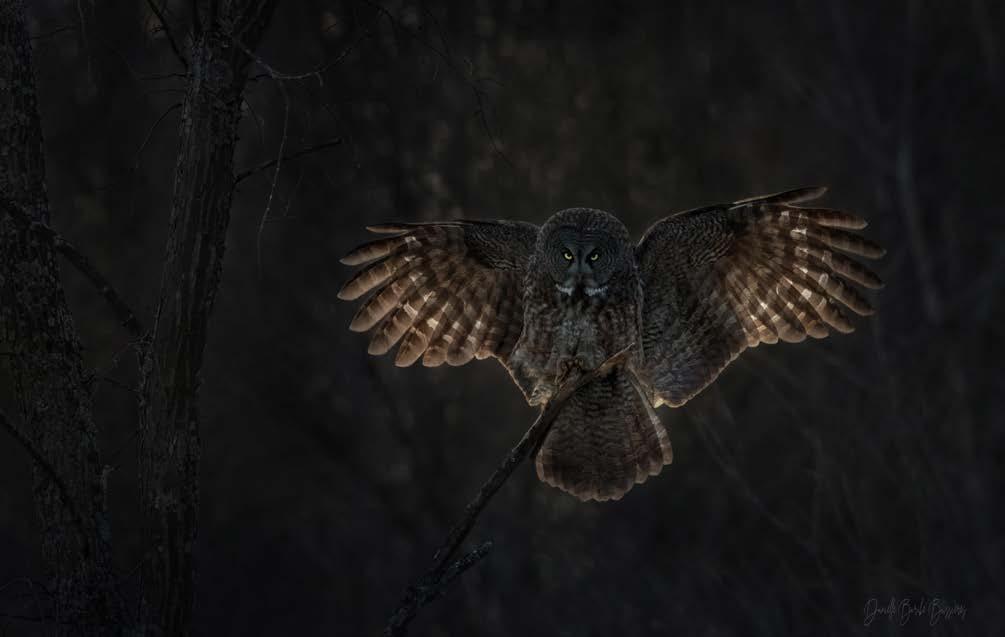

VIRTUAL CONFERENCE & EXPO
APRIL 22 - 24, 2022
photo: Lianne Liu
photo: Renée Robyn photo: Lisa Langell
photo: Danielle Barabé-Bussières
THE IMPORTANCE OF MASTERFUL RETOUCHING REGARDLESS OF YOUR SKILL AS A PHOTOGRAPHER
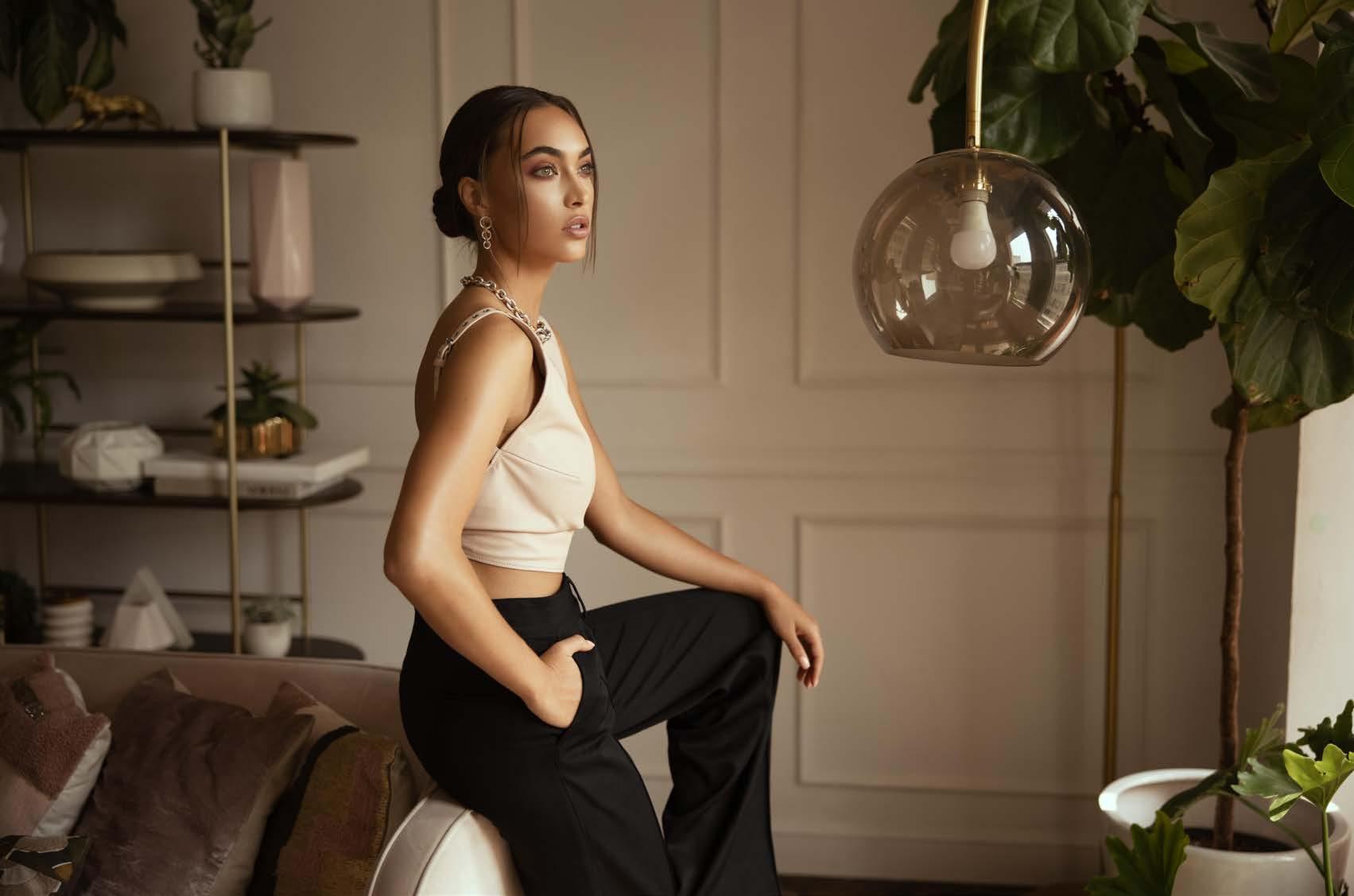 By Lana Polic
By Lana Polic
IT’S TIME TO REALIZE THAT TO SATISFY TODAY’S CLIENTS AND STAY COMPETITIVE, IT TAKES A LOT MORE THAN FANCY GLASS, THE LATEST MIRRORLESS CAMERAS, POSING, AND LIGHTING. PEOPLE’S SKEWED VIEW OF BEAUTY AND THEMSELVES HAS REACHED AN ALL-TIME HIGH! UNFORTUNATELY, OBSESSION WITH PERFECTION HAS BEEN AN EVERYDAY REALITY FOR SOME TIME NOW. WHETHER WE AGREE WITH THIS NEED TO LOOK AS PERFECT AS POSSIBLE IS BESIDE THE POINT BECAUSE OUR PAYING CLIENTS FEEL THIS WAY, AND NO ONE CAN SWAY THEM OTHERWISE. BEAUTY SELLS, AND OUR ADDICTION TO OUR NEVER-ENDING NEED TO BECOME “INSTA-FAMOUS” IS GROWING EXPONENTIALLY. OUR CLIENTS ARE MORE CONCERNED WITH THE QUALITY OF THE RETOUCH THAN THE QUALITY OF THE PHOTOGRAPH. SIMPLE PHOTOS WITH A GREAT RETOUCH ARE PURE GOLD IN THEIR EYES, AND THEY ARE WILLING TO PAY FOR IT. THIS GROWING TREND FOR PERFECTION AND IMMACULATE RETOUCHING IS THE REASON WHY I PRIORITIZED MASTERFUL RETOUCHING AS A SIGNIFICANT ELEMENT OF MY PHOTOGRAPHY SKILLS AND EDUCATION.
First impressions are critical! We all know that we only get one chance to make a first impression. A photographer could have a great shoot with a client, lots of laughs, good times, and great photos in the back of the camera. You nailed it, right? Not so fast! To show them all the great variety of images photographers send way too many, otherwise known as a photo dump. To show how quickly we turn around a shoot, photographers send badly retouched photos using Lightroom filters or presets in Photoshop which make the skin appear unrealistic. The result is a not-so-great first impression of the images. That’s very difficult to overcome. Once we make our first impression, it’s there forever and cannot be changed. First, the solution is to be much more selective in what you show. Second, do a great job of retouching those first impression photos. Third, once that great first impression is in the bag, now you can focus on showing other options if the need arises. The second batch of photos does not need
to be retouched, but the photographer must still carefully select. The effect of seeing not-retouched photos after attainting a great first impression is much more forgiving. Clients are excited about their shoot with you and understand that the photos they liked could be retouched the same way as the original first impression photos.
A photographer should not only develop a photographic style, but it is equally important also to develop a retouching style. If a viewer sees your work without your name, they should tell that it is your work. It makes sense, right? You cannot
SPRING 2022 | GALLERIE MAGAZINE | 6
(image 2)
After
possibly have a successful brand built around your photography if your work is visually inconsistent. Some photographers have a very high contrast look, and others have a consistent color palette associated with their work. These are just two examples of some decisions you should make about “YOUR LOOK.”

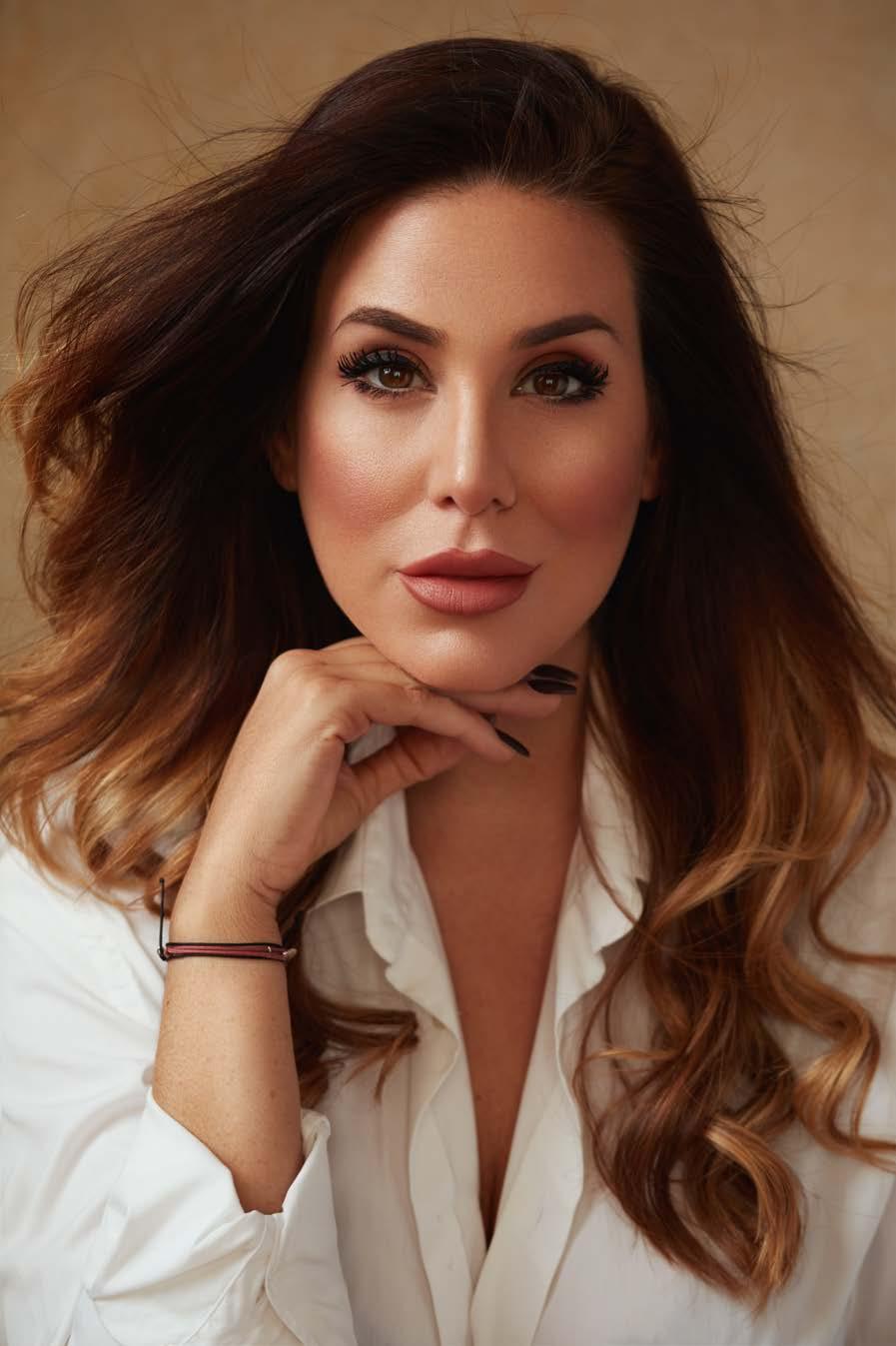
We live in a time where almost every human on earth has a camera in their pocket and a place to share their photos online instantly. With this in mind, what motivates a client to search for a professional photographer to pay for a photoshoot? The answer is the photographer’s photographic and retouching capabilities. Those two go hand in hand and should be treated equally for success.
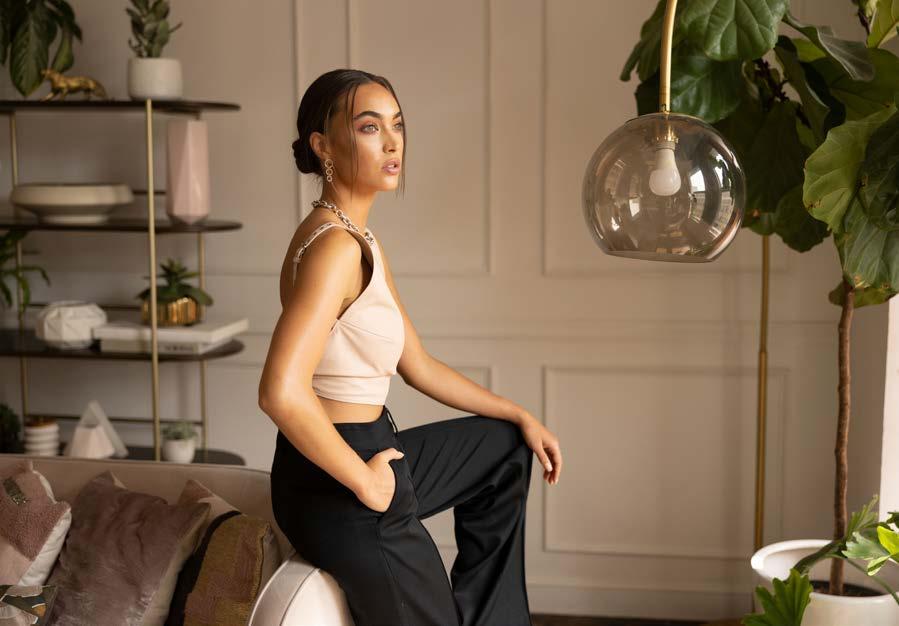
SPRING 2022 | GALLERIE MAGAZINE | 7
Before (image 2)
After (image 1)
Before (image 1)
Lana Polic is a Croatian-based Commercial Fashion and Beauty photographer and professional photo editor. Her unique approach to learning photography techniques through self-portraits has led her to advance quickly through the ranks of most photographers. In her relatively short career, she has already been commissioned to photograph the cover and feature article of a major magazine in Croatia. She has been featured several times in Rangefinder magazine and has been chosen to be part of a very selective mentorship program, Canon USA. Lana is a master photo retoucher. Her retouching style is based on natural elegance, intriguing color-grading, and a keen eye for detail. Lana has even retouched the commercial images featured by most of the top stylists in Los Angeles, including the Instagram account of the Kardashian family. Lana has a deep passion for education and helping others through her own experience in this competitive industry.

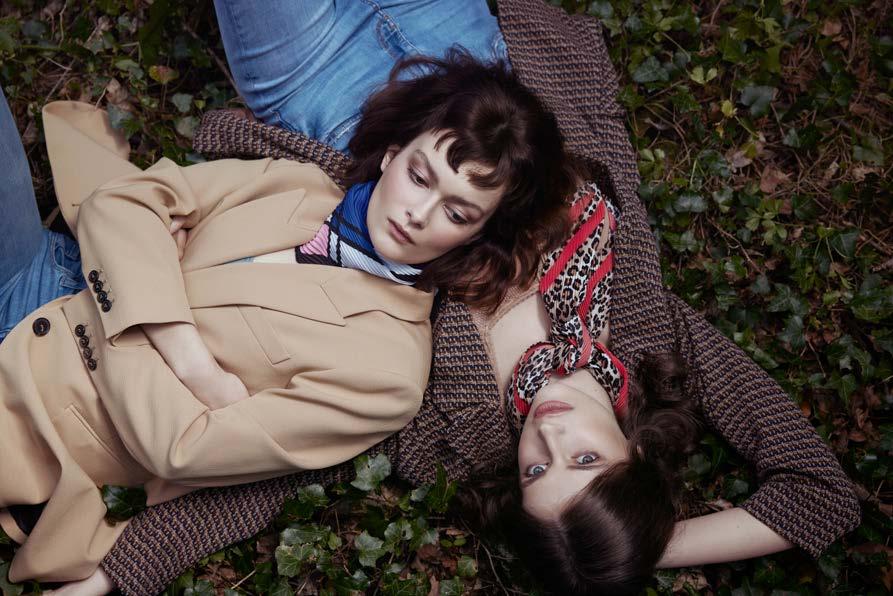
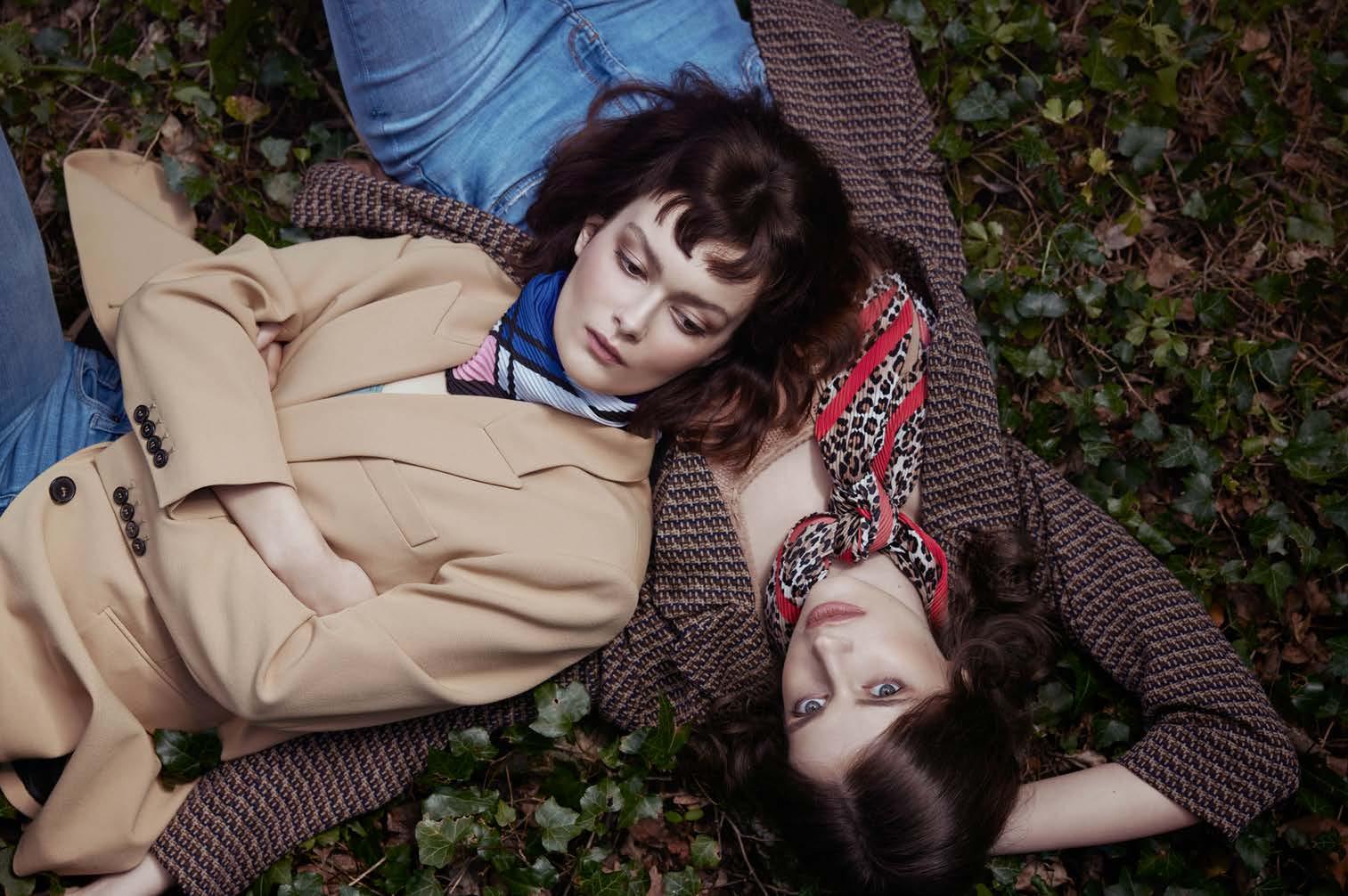
SPRING 2022 | GALLERIE MAGAZINE | 8
After (image 3)
Lana Polic
Before (image 3)

FROM TRUE TO LIFE, TO SOMETHING BEYOND REALITY
By Lillian Lu
MY CHILDHOOD WAS FULL OF BRAVE KNIGHTS, PANTHEONS OF ANCIENT DEITIES, AND LOST KINGDOMS.
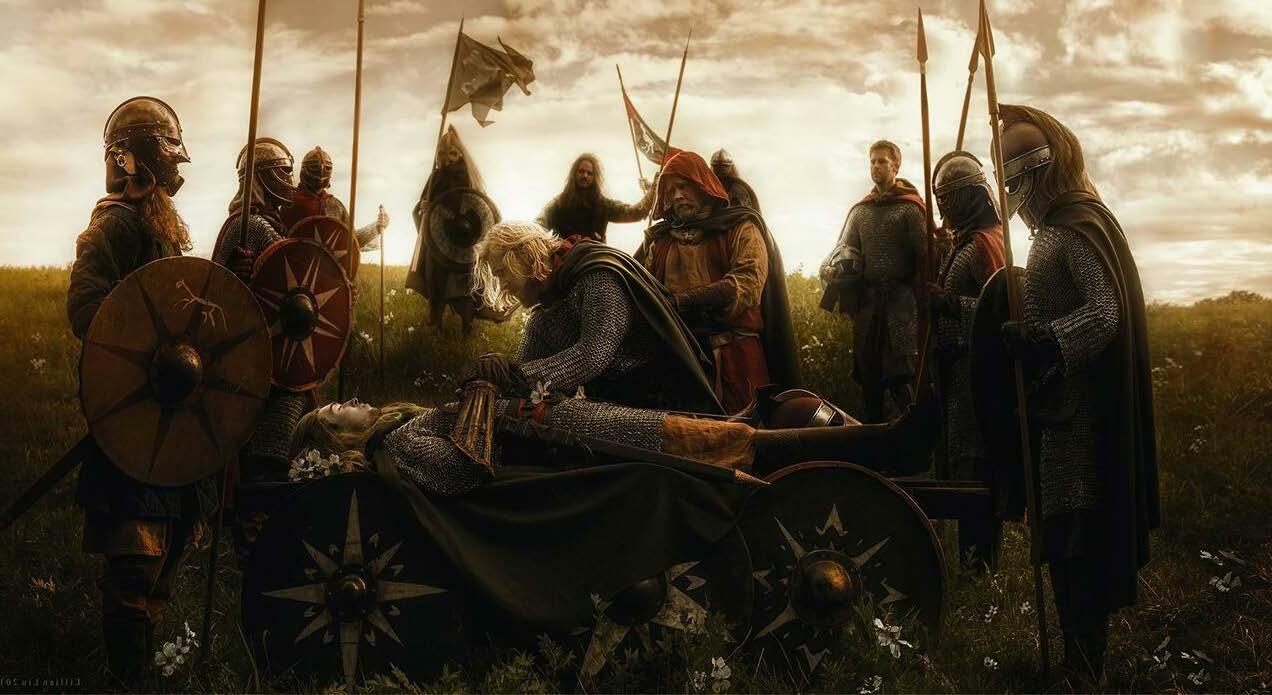
I WOULD LOOK AT MY TOYS AND STUFFED ANIMALS AND THINK OF WONDROUS UNIVERSES AND STORIES FOR THEM. I BELIEVED THAT THEY WERE GIVEN LIFE IN THIS WORLD FROM BEING LOVED BY A CHILD, TO EXPERIENCE THE WORLD’S MAGIC THROUGH THE ACT OF EXISTENCE, JUST BEYOND OUR LINE OF SIGHT WITH THEIR SECRETIVE ANTICS. LITTLE MUSHROOMS IN MY BACKYARD GARDEN WOULD BE SOFT CANOPIES FOR THE FAIRIES, AND THE SHADOW OF TALL TREES WERE GREEN TEMPLES TO TIMELESS SLEEPING GODS. I WOULD TALK TO THE MOON BECAUSE I BELIEVED THE MOON WAS SAD AND BELIEVED THAT GLITTERING STONES BEHIND MY ELEMENTARY SCHOOL HAD MAGIC POWERS.
My name is Lillian Liu, and I am a creative photographer who specializes in illustrative fantasy work derivative from this nostalgia. Currently based on the west coast of Canada in rainy Vancouver, I find myself shooting in Canada, the USA, and the EU.
My passion is to create works that mirror imaginative settings...full of characters that we used to embody on the playground and read about in storybooks. Having a musical upbringing, I would spend my childhood surrounded by music and stories of beloved composers, and the historical texts and tales their works would stem from as I practiced. And through music, I found things that would resonate with my art today- purpose, atmosphere, context, colour, and delivery. It is my intention to inspire the viewer to seek out sources of inspiration from the world around them and from within- and to draw techniques and resources that they might already be familiar with through the practice of portrait photography, but then expanded upon to include room for the fantastical and the improvisational.
By expansion, I mean not only in the storyboarding and preparation sense, but in the processing and manipulation of an image afterwards to match the visions in our mind’s eye that exist only in that personal, imaginary plane.
Most importantly, however, shooting and creating should be fun and bound not by rules and rote, but by intention- and I hope to open the door to creating inspirational fantasy art for any budget and skill level that is both cost-effective and simple while introducing new ways that you can train your artistic eye. Whether you have a small LED panel, natural light, or a fully stocked studio...a smartphone, or the latest and shiniest camerafantastical imagery can find a home anywhere.
For my upcoming talk with the Canadian Imaging Conference & Expo 2022, I will cover the basic ABCs of fantasy photography, from theory to execution. Topics like composition, colour, props, model posing, resourcing, composite work, and colour grading will all be covered as I dissect my work, while I will also walk you through the editing process of a new piece and elevating it from true to life, to something beyond reality.
Remember- the camera is your brushdon’t let your gear limit you!
SPRING 2022 | GALLERIE MAGAZINE | 10
Lillian is a young creative photographer who utilizes digital techniques to create unique atmospheres in her work. She is also a part of the humanitarian artistic collective Free Spirit, headquartered in Paris, as of 2016.
Features, clients, and publications as a photographer include: Marie Claire Taiwan, Vogue Taiwan, Penguin Random House, Paris Hilton, My Modern Met, CTV News Canada, Art.Ifeng, Craftopia on HBO Max, and many more.

Lillian’s latest award is the Grand Award, Creative Division at the 2021 WPPI Competition. She has also won the 2020-2021 WPPI First Half Competition, placing first in the Open Creative category. Lillian has also received awards in the Photomanipulation category in the 5th and 6th annual Fine Art Photography Awards for her pieces “Blood Flower” and “The Sacred Gift.” She is also a finalist of the 2019 Beautiful Bizarre Magazine and Stocksy Photography Award with “The Bard.”

Lillian has collaborated with The Colour Lab to release her own set of colour-toning actions in the Fairytale Collection. She is also an ambassador for lighting company Lumecube.
Instagram: https://www.instagram.com/lillianliuphotography/
Facebook: https://www.facebook.com/LillianLiuPhotography
Tiktok: https://www.tiktok.com/@lillianliuphotography
Website: http://lillianliu.squarespace.com/

SPRING 2022 | GALLERIE MAGAZINE | 11
Lillian Lu Bio
WHERE WILL THIS IMAGE POTENTIALLY LIVE?
By Lisa Langell
I AM GOING TO INSPIRE YOU. BUT FIRST, YOU HAVE TO BE READY TO ACCEPT A NEWER, NUANCED APPROACH TO HOW YOU CREATE YOUR PHOTOGRAPHY.
Most every invested nature and wildlife photographer has encountered the standard “rules” for creating excellent images. These rules become indelibly engrained in our minds whenever we attempt to capture great images. For example:

• Apply the rule of thirds
• Fill the frame
• Technical excellence
• Capture detail and action
• Seek vibrant images
• Avoid exaggerated negative space

• Employ color correctness
• Avoid clipping highlights and darks
• Left-to-right motion
• Tell the story
SPRING 2022 | GALLERIE MAGAZINE | 12
Where did these rules first originate? Who delineated them? How was consensus achieved? What was the intended purpose of the rules?
Some rules, like the rule of thirds, are scientifically based and widely accepted. Others appear to originate from general consensus. That said, we as artists who dutifully apply these criteria are missing an extraordinarily important component that stifles our creativity, output, and value of our work: Context!

I propose that we should always consider one important question before taking any photo: Where will this image potentially live? Thus, it gives context to our criteria.
Rules are product requirements. They help us ensure the final product fits the need. For example, in architectural design, an architect consults with the client and designs according to the client’s needs. If the client needs a state-of-the-art health care facility, this process ensures the architect designs a revolutionary hospital versus a convenience store. For a software engineer, having context and requirements ensure that the product created addresses a client’s need for an accounting program versus Ms. Pac Man. Gathering all of the requirements is quintessential to creating the right product for the right location so that it has a proper home where its purpose is fulfilled. It also fosters creativity and innovation.
It is startling to see that in many of our nature photography competitions, contests and courses, virtually none of the rules offer the photographer with criteria around an image’s purpose, or theoretical home, for which those images are to be created. Nature photographers desire more options than magazines and calendars for their work. I have heard numerous times from photographers out in the field, “I love photography, but I’m not sure what I am supposed to do with all of these images!” Without a purpose, they admittedly aspire to magazines or calendar type work, but with waning demand, most images have a default home on social media, or worse, to be banished
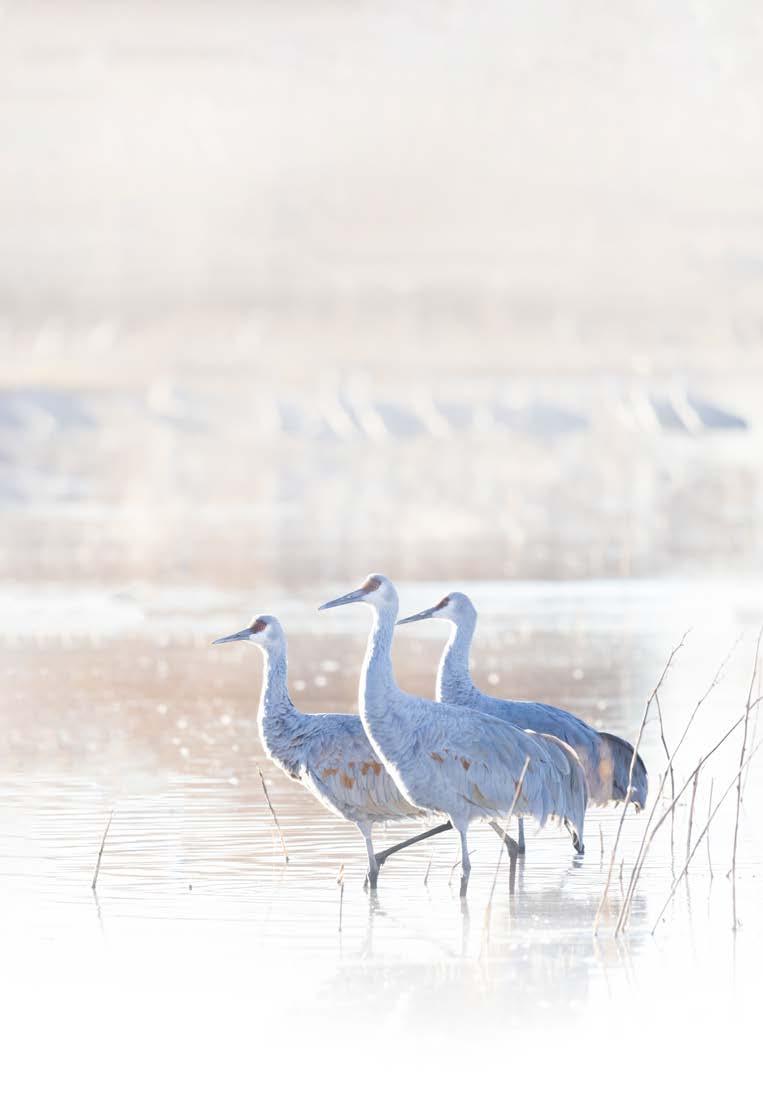
SPRING 2022 | GALLERIE MAGAZINE | 13
forever to the hard drive. Some shoot with the intention of selling prints, but that intention is often quickly followed by “but most people don’t buy wildlife photography.” With a shrug, they continue their photography for the fun of it. That is OK, however, most prefer their images have a purpose over none.
So, I’m asking you: Is the purpose of your work to earn merit in competition? Is it for publication in a wildlife magazine? Calendar? Art museum? Children’s book? Tour brochure? Social media? Scientific documentation? Conservation awareness? Greeting cards? Fine art? Decorative Art? Marketing? Gifts for friends? None are wrong, but it is shortsighted to believe that adhering to a single set of rules will produce a successful, high-quality image for all of these different purposes. I propose we start looking deeper at shooting not just with purpose, but for a purpose—and then develop general requirements for each of these different categories. It is here where inspiration, more joy, and a wider interpretation of “what makes for good photography” can be found.

Categorization also helps solve controversy—such as what an acceptable amount of post-processing should be on a wildlife image, or the correct amount of negative space, saturation, what is proper for aspect ratios, print media, or even how images should be best composed.
Without this, it’s like trying to create “the best cake.” Without knowing whether we are baking for a wedding, funeral, birthday or holiday—or whether it’s for a group of six or 600--we cannot possibly know how to create nor decorate the perfect cake. Criticism becomes highly subjective and based on personal preference over purpose.
A simple example is with a histogram. A prolific rule I have heard innumerable times is how an image’s histogram should resemble “a mountain in the middle” with either end of the graph touching the edge of the histogram. Another standard often held is that aspect ratios need to typically be 8x10, 8x12 (and more recently, 16x9 has been acceptable). However, the rules need to be informed by the purpose of the work. Photography should do the same. What if the purpose of the image is to become a 40x170” image of silhouetted shorebirds for the hallway of a beachfront hotel? If so, adhering to rules relating to histograms or aspect ratios will never result in the image fulfilling the intended purpose. Architect Louis H. Sullivan in 1896 coined the popular phrase “Form follows function.” We should be considering this as we photograph whenever possible—and photographing in such ways as to capture the subject and modify our compositions and exposures to suit numerous potential “homes’ in which they could someday live.
In other situations, conventional wisdom in the field has said, “Never photograph birds against a white sky.” Similarly, that same sky can be use to capture high-key style images of birds. Yet judges
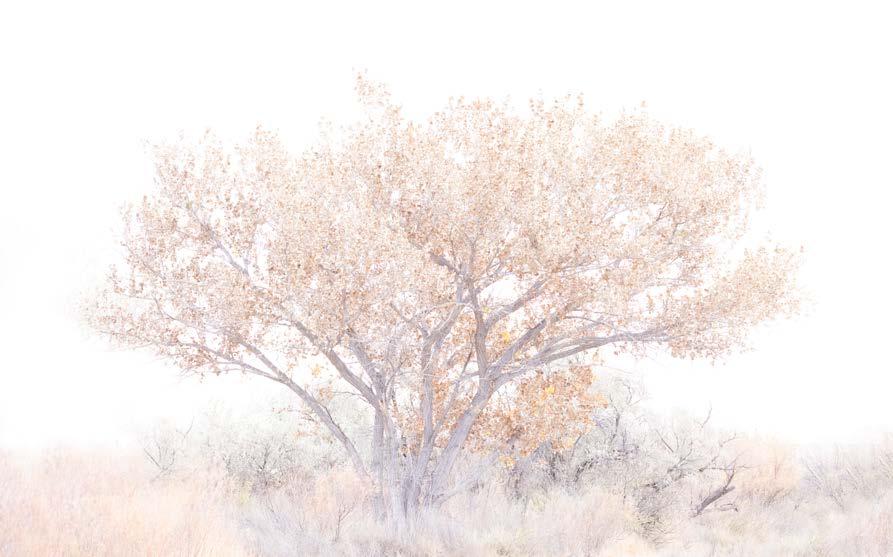

SPRING 2022 | GALLERIE MAGAZINE | 14
and the bird photography community typically frown upon high-key style images. Why? Because the rules suggest frame-filling subjects in vivid color and shot ‘in good light” make for the best images. Requirements for photos that leap off the pages of magazines and calendars are likely at the heart of those rules. High key images do not tend to have a secure home in those publications; however, placed in a home, office or lobby, these images become highly desirable! Sadly, differentiating between what is best suited for calendars and magazines versus those hung in home or commercial interiors typically does not get taught--nor subsequently included in rules created for competitions or contests.
Times have changed, however. Many publications have gone belly-up. Stock photography prices have left little meat on the bone for photographers. Yet the many rules haven’t changed much. I propose we identify categorized requirements that allow us to flexibly photograph for multiple purposes. We could set helpful criteria for creating banner images, and then pivot to capture the same subject under guidelines for gift products, then style it again so it can work for decorative art. As such, competitions around those rules should enthusiastically follow!
For now, the field still largely has a “one size fits all” approach to the rules and unless we become more flexible in our thinking, we will be teaching our newest dogs the same old trick.
My inspirational session at CICE 2022 will give you a path to this new way of thinking. It provides a plethora of ideas, requirements, and techniques that will evolve your photography to not only capture wildlife and nature in traditional ways, but allow you to become “multi-lingual” in how you “speak photography” across an array of new markets. By the end, you will be able to envision where your image is going to live and create stunning photographic art perfect for that ultimate purpose.
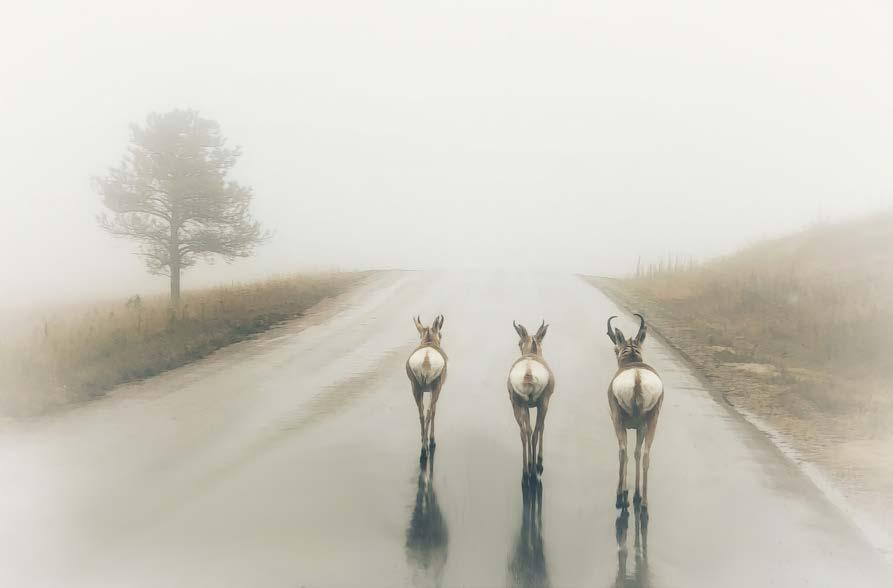 Lisa Langell Scottsdale, Arizona
Lisa Langell Scottsdale, Arizona
A nature photographer and birder from the age of eight, Lisa is the founder of Langell Photography, Inc. (http://www. langellphotography.com) and more recently, Focus Your Art, LLC. (http://www.focusyourart.com). She began her own business in 2010 after long vibrant careers as a floral designer, educational psychologist, consultant and in helping launch and manage two startups that grew into leading companies in the Ed-Tech space. Since then, she has earned numerous awards and has been published in Outdoor Photographer, Arizona Highways, Ranger Rick, Images Arizona, and more. She is a Board of Directors member for the North American Nature Photography Association (NANPA), is an ambassador for Tamron, Fotopro and H&Y, and is a judge for Viewbug.

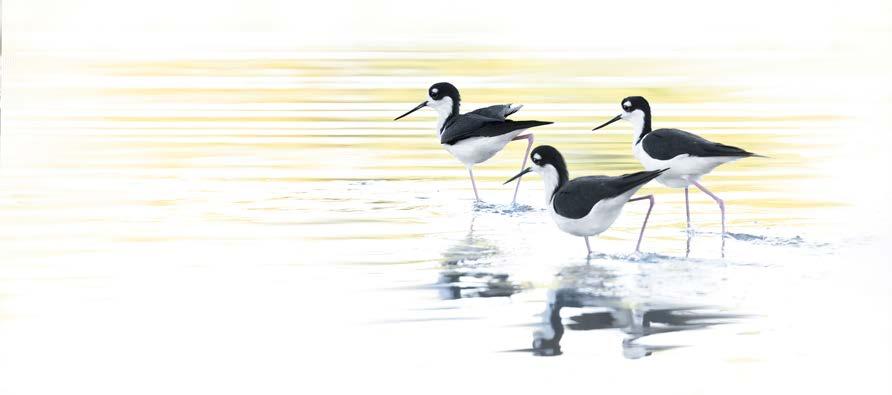
Lisa loves creating nature photography and art that is inspired by her background in psychology and design. When Lisa isn’t having fun making photographs, she’s thriving on teaching photography. Her humility and passion for both shines through in how she provides memorable, fun, and educational experiences that enrich, invigorate and expand photographers’ minds in wonderful ways.
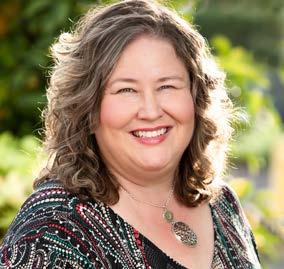
SPRING 2022 | GALLERIE MAGAZINE | 15
All times listed are
Thanks






SPRING 2022 | GALLERIE MAGAZINE | 16 PPOC
2022
CONFERENCES
SCHEDULE
Room A Friday 22 April, 2022 Room B Friday 22 April, 2022 10:00 to 11:00 am Meghan Ward Tools for a Sustainable and Resilient Business Danielle Barabé-Bussières Making A Profit With Your Artwork In English 11:00 to 11:15 am Q&A Q&A 11:15 to 11:30 am Break Break 11:30 to 12:30 pm Lianne Liu Fantasy ABCs - Conception to Transformation Lana Polic Master the Portrait Retouch in 60 Minutes 12:30 to 12:45 pm Q&A Q&A 12:45 to 1:00 pm Break Break 1:00 to 3:00 pm TRADE SHOW DAY one TRADE SHOW DAY one 3:00 to 4:00 pm Neil van Niekerk Timelapse Photography Roberto Valenzuela Posing & Lighting For Wedding Photography 4:00 to 4:15 pm Q&A Q&A 4:15 to 4:30 pm Break Break 4:30 to 5:30 pm Renée Robyn Unconventional Tips for Compositing Aaron Hockley The Artificially Intelligent Photographer 5:30 to 5:45 pm Q&A Q&A 5:45 to 6:00 pm Break Break 6:30 pm 2nd Annual PPOC Smarty Pants Trivia Challenge Social Time
EDT
to
Nikon Canon Sony Technicare Premier Photo Lab GTA Imaging Harvard Western Insurance Graphi Studio
our Sponsors!
Room A
Saturday 23 April, 2022
Roberto Valenzuela Fashion
Room B Saturday 23 April, 2022
Richard Terborg
Enhancing A Boring Studio Shoot To Make Money
Room A Sunday 24 April, 2022
NEC Commercial Image Critique
Q&A Break Break Break
Q&A
Lisa Langell
The NEW Nature Photography
Charles van den Ouden
Preparing and Submitting Images for PPOC Image Competitions
NEC General Image Critique
Q&A Q&A Break Break Break
TRADE SHOW DAY two
Danielle Barabé-Bussières
Les méthodes que j’utilise pour faire des profits avec mes œuvres En français
TRADE SHOW DAY two
Simon Blakesley Shoot What You Love Aviation Photography From the Ground Up
Q&A Q&A Break Break
Renée Robyn Art of Bodies
Neil van Niekerk On-Camera Bounce Flash Photography


NEC Portrait Image Critique
Conferences in the comfort of your home

April 22-24, 2022
Eastern Daylight Saving Time
www.canadianimaging.org



SPRING 2022 | GALLERIE MAGAZINE | 17
Q&A Q&A Break Break Let’s Get Gala Ready 6 pm to 10 pm AWARDS GALA
Mirrorless Cameras
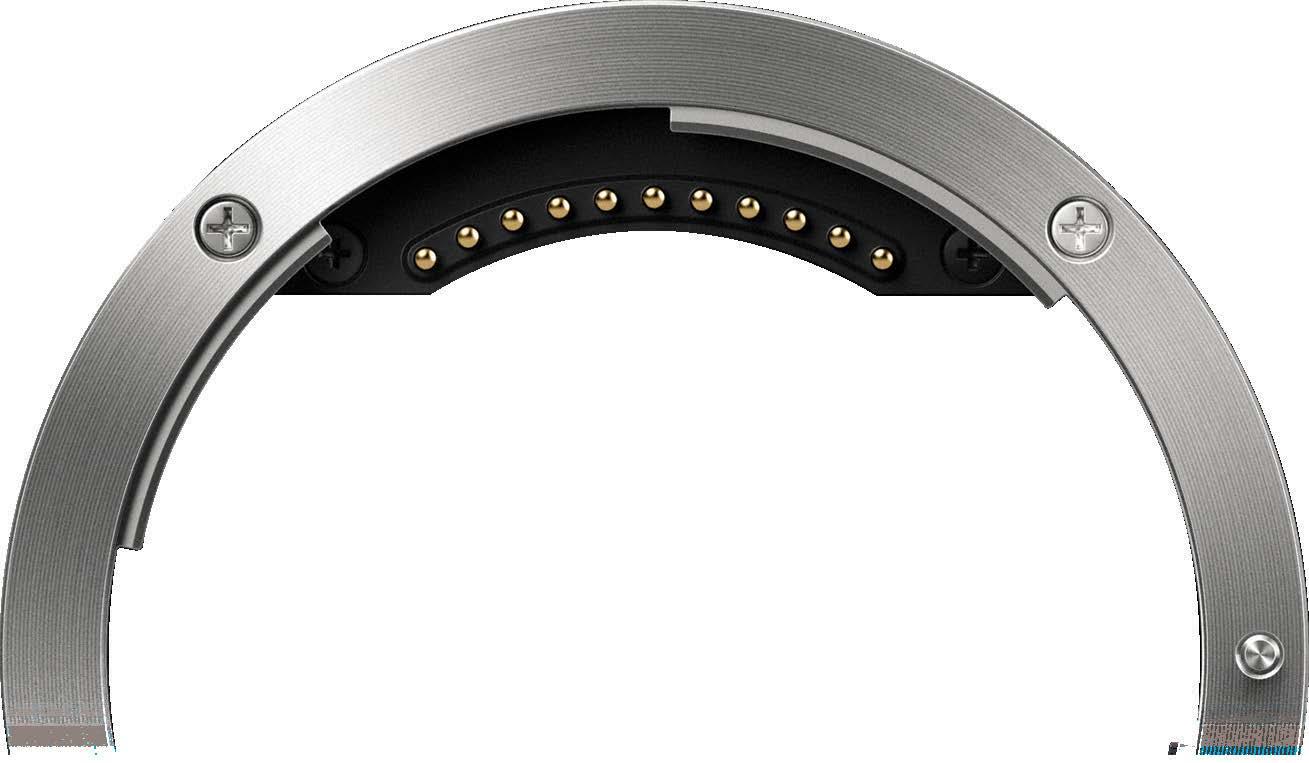
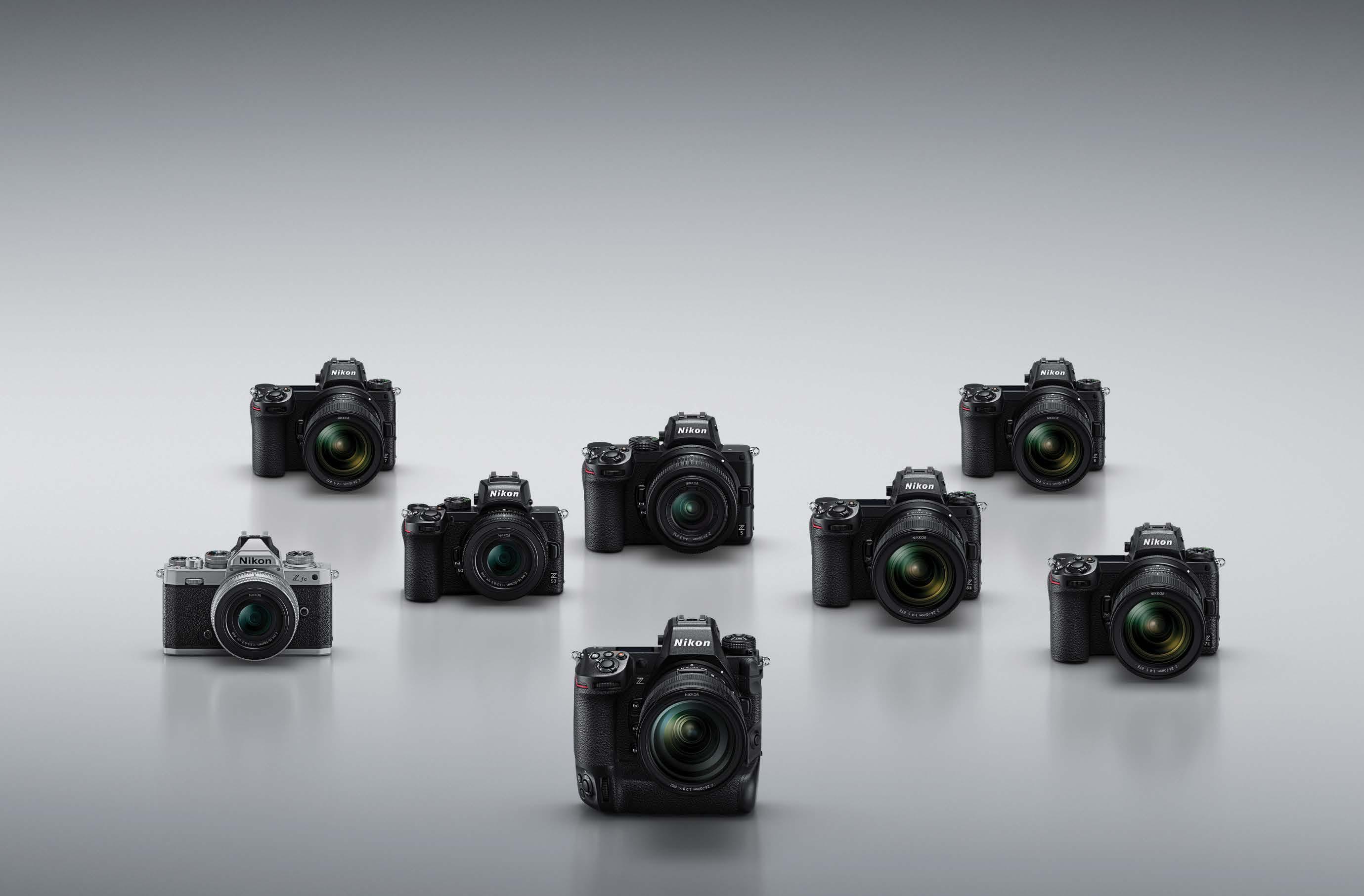
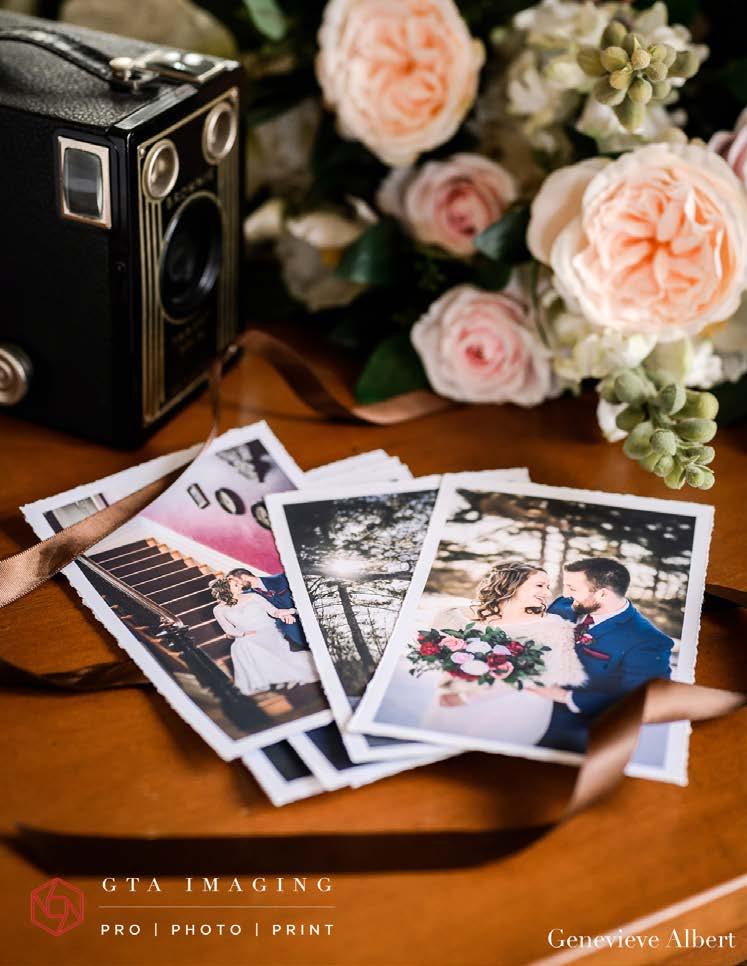
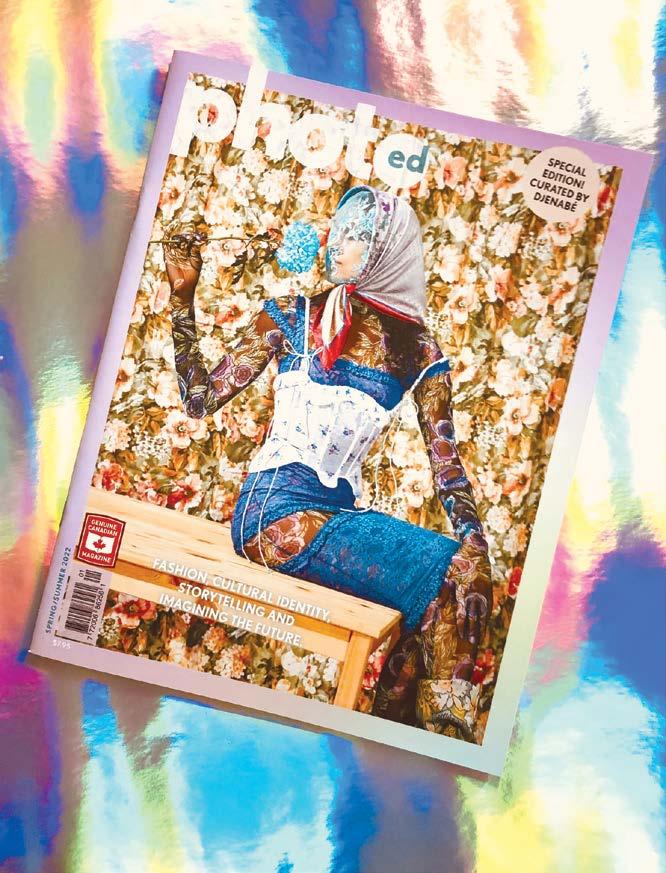
SPRING 2022 | GALLERIE MAGAZINE | 18 WWW.
CANADIAN PHOTOGRAPHY IN A BRAND NEW LIGHT @PHOTOEDMAGAZINE
PHOTO ED.CA
The most versatile Nikon cameras. The most beautiful stills and videos.
2022 ACCREDITATION DEADLINES

Even though Covid-19 is preventing in-person accreditation judging from happening at this point, please remember that PPOC is still continuing to judge accreditations five times per year. Next accreditation deadlines are:
pm EDT
-
- October
2022,
GET ACCREDITED! https://www.ppoc.ca/members/member_accreditation.php You have to log into your account to see this page.
- April 20, 2022, 5
- June 20, 2022, 5 pm EDT
August 29, 2022, 5 pm EDT
17,
5 pm EDT
IMPROVE YOUR PORTRAIT PHOTOGRAPHY: LIGHTING WITH BOUNCE FLASH
By Neil van Niekerk
FOR A STRAIGHT-FORWARD BUT EFFECTIVE PORTRAIT LIKE THIS, THERE ARE JUST A FEW THINGS THAT MUST COME TOGETHER… ALL WITHIN YOUR CONTROL AS THE PHOTOGRAPHER:
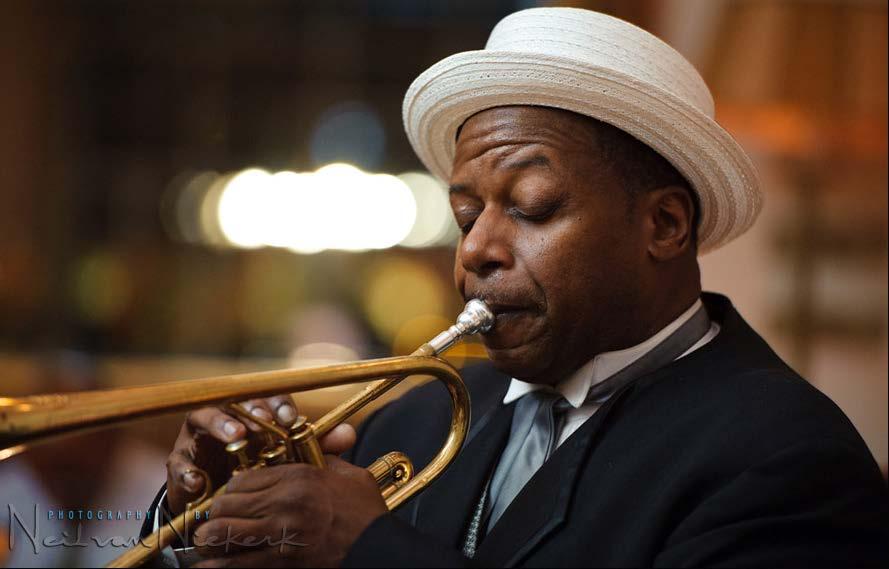
FRAMING / COMPOSITION
This is mostly as simple as looking at the edges of the frame in your camera’s viewfinder, and then deciding how much headroom or breathing room you want to allow. Also look at the background and exclude what doesn’t add to your photograph. In this example, it was easy enough, working in my studio which has a grey wall.
Often though, I find that aspiring photographers that I teach at my workshops haven’t developed the ability yet to look at the way they frame the subject and look at the edges of the frame in their viewfinder. They either shoot too tight, way too loose, or with a lop-sided composition as they center their subject in the frame. It just needs a little bit of practice.
POSING / EXPRESSION
My subject here, Claudia, is a professional model who certainly knows to pose, however, she doesn’t know how the photographer is going to frame her so it is still up to us to tell her how we are framing her. It doesn’t help if her hands and arms are out of the frame if she thinks we are shooting half-length compositions. Even with a professional model, you, as the photographer, still need to guide and pose your subject.

SPRING 2022 | GALLERIE MAGAZINE | 20
LIGHTING
Here we come to the essential part that I wanted to discuss here – the lighting. In this example, the lighting is clean and open, with a slight gradient across her one cheek. That gives a more dynamic lighting pattern than flat lighting would have.
If this look appeals to you, then I have good news for you: it is within your reach. You too can easily have your portraits look as good as this!

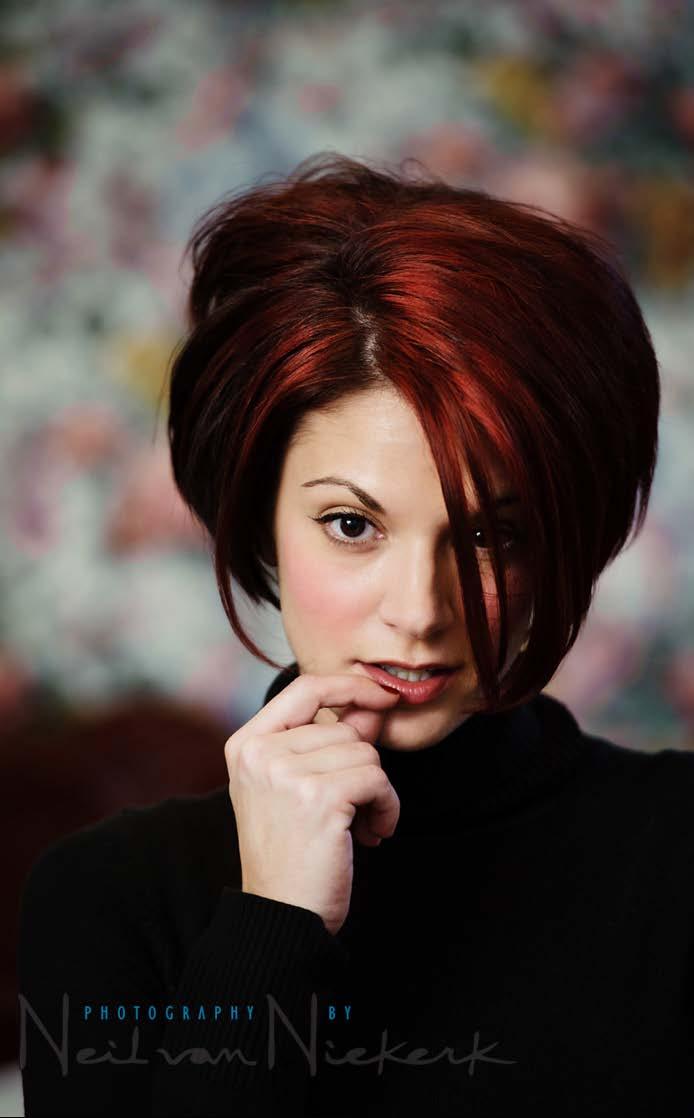
The lighting is simplicity itself: on-camera bounce flash. This was shot indoors without much available light in my studio, using nothing else other than the speedlight on my camera.
If you are shooting indoors, and using your speedlight on your camera, the simplest approach is invariably the best way to use the flash.
There are two of the most important tips I can give you on getting the most of your on-camera flash when you use it indoors:
Get rid of any light modifiers. No plastic cup. No Fong Dong. No flashbenders. No white flip-card. Nothing.
Bounce your flash into the direction that you want the light to come from. Not towards your subject, but in the direction that you want the light to come from. (Mind if I repeat that again? NOT towards your subject.)
Here I bounced the flash over my left shoulder because I wanted the light to come in from the direction best suited to how her hair is parted. In other words, I didn’t want the light to come from the direction where her fringe on her left-hand side would block much of the light.

SUMMARY
An elegant portrait need not be difficult in execution. Don’t get overwhelmed. A step-by-step control over the elements, and a straight-forward approach, is often the key to success here.
Neil van Niekerk is a photographer based in New Jersey, USA, working in a diverse range of fields such as weddings & portraits; commercial work and headshot & portrait photography. He also maintains an active website for photographers, (Tangents). He teaches workshops on photography and photography lighting. He has written five books on flash photography, of which two have been translated into Polish, Portuguese and Chinese. He has somehow also snagged an Emmy for time lapse photography along the way.
SPRING 2022 | GALLERIE MAGAZINE | 21
Neil van Niekerk
MAKING A PROFIT WITH YOUR ARTWORK
By Danielle Barabé-Bussières, MPA
I HAD TO SHARE MY PASSION FOR NATURE AND ANIMAL PHOTOGRAPHY WITH AN EIGHT-TO-FOUR JOB FOR THE PAST EIGHT YEARS. THIS PASSION FOR PHOTOGRAPHY WAS SO STRONG THAT I FELT LIKE I WAS WASTING MY TIME WORKING. GIVEN THE LIMITED TIME I COULD DEVOTE TO THIS PASSION SO IMPORTANT TO ME, I DEVELOPED STRATEGIES THAT COULD WORK FOR MY BUSINESS AND THAT I COULD OPERATE ON A PART-TIME BASIS.

I joined artists’ associations, which allowed me to exhibit my works in different places selected by the associations. We must explore the different options around us and make decisions based on the time required to achieve our artistic goals and ensure that these associations will bring us the visibility we are looking for and ultimately the sales we all deserve to obtain.
Thanks to my accomplishments in the PPOC, I have forged links with local newspapers, which have also offered me opportunities to exhibit my work in my community. The PPOC press releases we receive are very important in demonstrating the level of excellence we have achieved. Equally important are the photo club recognitions that members receive – how to make them relevant and make them work in our favour. All this takes

SPRING 2022 | GALLERIE MAGAZINE | 22
time that we must invest in our daily life, and we must remain focused on what motivates us to want to create products that will end up in places where we will be proud to visit.
I also got involved regionally in photography clubs where I made presentations on the techniques used for photographic shots as well as how I choose and work on the images that will be the most popular and which will be selected by my clients for themselves for their home decor. These interactions have also resulted in sales – by the score!

All the sales initiatives that we attempt require some investment and if you want to be successful, you must work out a budget for the products (photo prints, canvas, cards, coffee mugs, blankets etc.) – and it must be worked out depending on what we want to offer our potential customers.
I will also discuss the different marketing techniques (investment) that I use to increase my sales, such as calendars, cards, social media promotions, etc.
I am now a young retiree who has time to explore the other avenues available around me – I have communicated with art gallery owners – I hope to be able to announce good news to you when we meet in April.
Looking forward to meeting you virtually at CICE 2022 and sharing our marketing strategies.

SPRING 2022 | GALLERIE MAGAZINE | 23
Danielle Barabé-Bussières, MPA


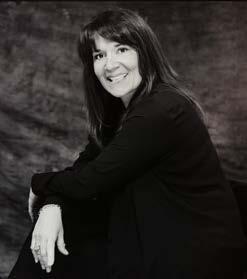
Since her childhood, Danielle has been a lover of nature and uses it fully to recharge her batteries and to meditate when life goes too fast. She is also a mentor for three PPOC members. Danielle is the proud mother of two and the grandmother of three granddaughters. She can’t wait to teach them how to fish and introduce them to the wonderful world of insects!
www.daniellebarabebussieres.com/ www.facebook.com/DanielleBBphotography/
SPRING 2022 | GALLERIE MAGAZINE | 24

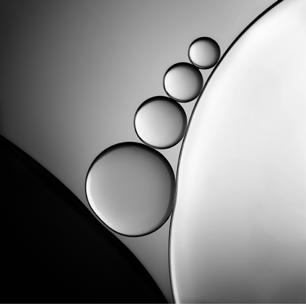










Did you know you can become a member of Canada’s oldest and most recognized professional photography association for as little as $27 monthly (plus tax)? Apply to join today! 1-888-643-PPOC (7762) info@ppoc.ca ppoc.ca
CALL ME A PEOPLE PHOTOGRAPHER
By Richard Terborg
I WAS BORN AND RAISED ON A TROPICAL ISLAND IN THE CARIBBEAN CALLED CURACAO. I LIVED THERE THE FIRST PART OF MY LIFE (18 YEARS) BEFORE MOVING TO THE NETHERLANDS AND “ALMERE” (A TOWN A FEW KILOMETERS NEXT TO AMSTERDAM CENTRAL).


Photography, business and teaching photography and arts became a big part of my life here. In my presentation I want to tell you the story of how this all went, along with some tips, tricks and things learned along the way.
I could do a whole introduction about how it is to swim in beautiful warm blue waters and dive with sharks. But that’s not that interesting. What is interesting is how I’ve been told so many times while growing up in this photography business, that you need to be a specialist. You need to know and understand the category you’re working in and be the best at it. It can be portraiture, boudoir, wedding, or any other photography category that exists. If the past two or three Covid years have taught me anything, it was that being a generalist (I call myself a people photographer now) or at least knowing when to switch from one to the other is better than being in one specific field.
When Covid hit and the world shut down, I saw a lot of my specialist photography friends who were in the wedding or in the event photography business, shut down. They didn’t have work anymore and they tried to ride it out, until there was no more cash to ride it out and they had to close shop and find something else to do.
SPRING 2022 | GALLERIE MAGAZINE | 26
Back in 2008 when I started my business fresh off the corporate job, the housing market / bank crash happened. It was here that I learned to go with the times and go with the flow and not to hold on to old principles. What do I mean by this? Back then I heard “older” photographers say that they used to charge +$10,000 dollars for a big commercial photoshoot and that the “hobbyists” were getting in the space and taking those jobs for less money. Those prices never came back. I never tried to find them. I was one of those “hobbyists” doing it for less and “stealing” their old jobs.


With Covid, I threw my speciality in fashion photography and travel photography out the window on day one and started looking at what my limits were in this new world. I could only stay in my local town. I looked around and figured out who in my town did what with photography or imagery or who wasn’t affected by what was going on. I saw and noticed that we were still paying taxes. That means the city council was still getting money. I found out the city council wanted Covid stories which I produced by emailing them and asking some local people. Was I a documentary or news photographer? No, but I was sure going to learn how to fill in that spot and market that spot.
I made friends with local magazines and newspapers and did jobs for them. I found out there were a lot of budgets not used because of Covid, and they didn’t know what to do with budgets. I thought of different projects for different companies so they could use those budgets on little, old me and have a good photographic project to show for it.
Being a specialist in “normal” times when the world isn’t ending can be good. Being able to think quickly on your feet, not hold to old principles and to be able switch when needed helps! I had two of my best financial years because of it. While everyone was in lockdown, I was driving around shooting different “through the window” projects with my city council’s permission.
SPRING 2022 | GALLERIE MAGAZINE | 27
Richard Terborg
Richard Terborg is a people photographer in every sense of the term. A practicing photographer with two decades of expertise, he loves human-based images as they allow him to develop an emotional connection with the people he photographs. When shooting for a client, he consistently seeks a balance between sharpening the vision of the client brief and adding his own personal, artistic touch to the project.
As a brand ambassador for Elinchrom and Olympus, Terborg offers workshops in photography, set design, lighting, and entrepreneurship for creatives in countries such as The Netherlands, Curacao, UK, Germany, France, Spain, Wales, Denmark, Norway, Sweden, and Canada.




SPRING 2022 | GALLERIE MAGAZINE | 28
PREPARING AND SUBMITTING IMAGES FOR PPOC IMAGE COMPETITIONS
By Charles van den Ouden, HLM, MPA, SPA
SEVERAL WEBINARS AND SEMINARS HAVE PREPARED PPOC MEMBERS FOR REGIONAL AND NATIONAL IMAGE COMPETITIONS. THE PPOC RECORDED MOST OF THOSE EDUCATIONAL EVENTS AND MADE THEM AVAILABLE TO OUR MEMBERS. THE PAST NATIONAL SALON CHAIR, GERRY DAVID, AND I, AS PAST NATIONAL EXHIBITION CHAIR, WERE FACED WITH COUNTLESS QUESTIONS REGARDING SUBMISSIONS EVERY YEAR. IN ADDITION, GERRY DEALT WITH NUMEROUS SUBMISSION ERRORS BY BOTH SEASONED COMPETITORS AND MEMBERS NEW TO THE PROCESS.
With Gerry’s help, I decided to build a package that would cover the complete submission process, to build an updatable information session that would be accessible to PPOC members for years to come.

So, whether you are new to image competitions or a seasoned award-winning professional, this session will help you submit seamlessly.
We will cover a personal colour deficiency check, colour balancing your gear, file size preparation, final image assembly, file naming, file uploading and the conditions PPOC judges, adjudicating from their home, will use in judging your images. (With a few steps in between.)

Charles van den Ouden, HLM, MPA, SPA

Charles is a photographer trained at the Vancouver School of Art in Fine Arts, Film Animation and Photography.
He has received the Masters of Photographic Arts and an Honourary Life Membership from the Professional Photographers of Canada He has been President of PPOC-Ontario, a member of the Federal Council of the Professional Photographers of Canada and a Constituent Council Member for the Professional Photographers of America.
Charles is currently the Past National Exhibition Chairman for the Professional Photographers of Canada. As the NEC Chair Charles was responsible for the adjudication panels of six Regional Photographic Exhibitions throughout Canada as well as the National Photographic Image Competition of the Professional Photographers of Canada.
SPRING 2022 | GALLERIE MAGAZINE | 29
Photo by David Williams
ALLOW YOURSELF SPACE TO BE UNCOMFORTABLE
By Renée Robyn


COLORED GELS HAVE ALWAYS BEEN A MYSTERY FOR ME. IT’S SOMETHING I LOVE TO LOOK AT, BUT I RARELY ALLOW MYSELF TIME TO PLAY, MOSTLY BECAUSE I JUST DON’T GET IT. EVERYTHING FROM SUBTLE COLOR USE TO HEAVY-HANDED WORK, IT’S ALWAYS KIND OF ELUDED ME. AS A RESULT, I FORCE THE UNCOMFORTABLE AND I PUT MYSELF INTO THE STUDIO WITH MODELS WHO ARE UNDERSTANDING OF MY ANGSTY PUTTERING ABOUT.
What I’m doing is creating safe spaces for myself to fail and fail a lot. It’s the photography version of those rooms where you pay money to put on a pair of old smelly coveralls, grab a bat, and just break stuff for the afternoon. That’s what I’m doing to my brain. After all these years of creating fancy pixels, I have a box in there: These rules of “how it’s supposed to be” when I walk into the studio. There are benefits to this. When a client shows up and they want “X” I can roll up on two hours of jet-lagged sleep and deliver “X”. That’s kind of what a professional is, and I spent many years perfecting that formula. It’s what amateur me dreamed about when I first picked up a camera and when I turned it on, filled with anticipation laced with anxiety.
Eventually there comes a time when the systems we have in place go from being guiding lights to barriers and window bars. We need to create a room where we can simply break stuff with reckless abandon, or I do at the very least.
I call upon my trusty friends who understand the creative process. Typically, they are artists themselves and allow me space to break the boundaries within my own head. Instead of using the pattern I normally set up the lights, I flip it around.
SPRING 2022 | GALLERIE MAGAZINE | 30
The big modifiers I normally use stay in their boxes, and I clean the dust off my small ones. I remove all my usual creative comforts and allow myself to create some abysmal mistakes. Strange lenses, weird apertures, colors that sometimes hurt my eyeballs, and styling that normally would never enter my mind. How many or how few lights can I use to achieve a result that I hadn’t known was possible?
As always, I ensure my play session with starting in my comfort zone, the shallow end of the creative pool. Should my pixel finger painting turn into digital landfill, I know that my willing and patient subjects have something worth taking home, their time has been well spent. Even when financial gains are offered, I always want to be considerate of their time and talent as well. I want them to go home feeling like the day was a success, regardless of the results of experimentation.
I find that creating safe spaces for myself to fail, allows my career to be fun again. It gives me space to be unknowing of a result that in many areas I am quite secure in the results I desire. Suddenly I am a toddler again, fingers smashing into paints and joyfully decorating the walls while parental units are unaware.
Renée Robyn
Growing up surrounded by the vast prairie of the Canadian north and tales of faraway places, Renée Robyn has chased the perfect backdrop around the world. Approaching photography like a treasure hunter, her compositions are uniquely cinematic, often becoming pieces of a bigger world represented beyond reality.
Renée’s style is easily recognizable and distinctly her own. Expertly blending fact, fiction, and a little digital alchemy, she has worked with industry-leading brands like Wacom, Viewsonic, Corel, Capture One and Intel.
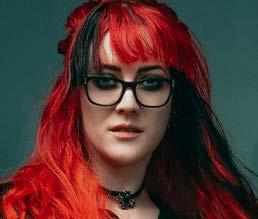



Comfortable facing down gale force winds, climbing fog-shrouded mountains or fast pace commercial studios, her work is impressive and committed. An expert retoucher, Renée applies the same level of commitment to post-processing leveraging her mastery of colour theory, editing, light, and shadow in the digital realm of Photoshop.
Renée Robyn Photography lectures have been presented around the world, including PhotoPlus, WPPI, Photokina, Creative Live, ProEdu and more.
SPRING 2022 | GALLERIE MAGAZINE | 31
FIVE TIPS FOR LIGHTING THAT MAKES A DIFFERENCE
By Roberto Valenzuela, Canon Explorer of Light
ROBERTO VALENZUELA WILL BE ONE OF THE TALENTED SPEAKERS AT THE 2022 CANADIAN IMAGING CONFERENCE AND EXPO (CICE). THE FOLLOWING IS A SHORT LIST OF FIVE TIPS THAT CAN HELP TO PROVIDE ATTRACTIVE AND FLATTERING LIGHT IN MANY DIFFERENT CONDITIONS

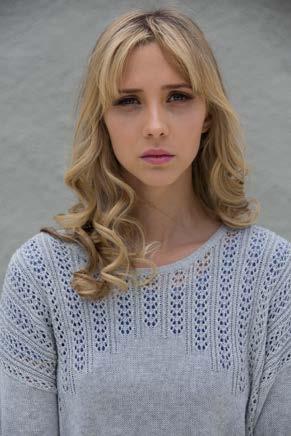
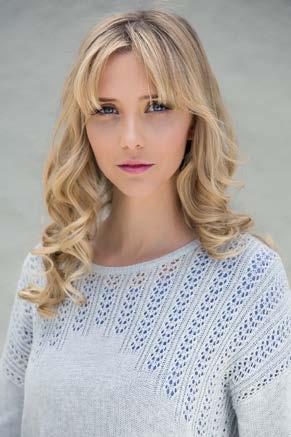
TIP 1: HAVE A LIGHTING BENCHMARK
When shooting with natural light, I strongly believe in the power of having a benchmark in mind regarding the quality of light. What I mean by this is, having a lighting quality goal to strive for, something quantifiable. Not all natural light falls the same way in your surroundings. The quality of light could literally double just a few feet from where you may be standing. In my book “Picture Perfect Lighting”, I wrote the benchmark I use for people photography. Here it is:
Outdoor Sunny Day
Lighting Benchmark:
Shutter: 1/500
Aperture: f/4
ISO: 100
Cloudy Day or Large
Open Shade
Benchmark:
Shutter: 1/500
Aperture: f/4

ISO: 400
Indoors
SPRING 2022 | GALLERIE MAGAZINE | 32
Sunny Benchmark achieved Sunny Benchmark not achieved Benchmark location Final image
Benchmark: Shutter: 1/500 Aperture: f/4 ISO: 800
The way these benchmarks work is by setting your camera to these specific settings depending on whether it’s sunny, cloudy, or you are indoors, and trying to find the quality of light that would get you a good exposure on your subject’s face at these settings. Basically, you try to find the light to match those specific benchmark settings, instead of changing the camera settings to fit the light. I always give myself a 1-stop of light break. For example, if I’m shooting a client outdoors on a sunny day, and I can’t find the light quality needed to reach the Outdoor Sunny Day benchmark, I’m ok dropping the benchmark to 1-stop under. This means my shutter speed would be 1/250 instead of 1/500. I consider 1-stop under the benchmark totally ok. 2-stops under would not be good.
Why a lighting benchmark? This benchmark has been responsible for my largest growth as a photographer when photographing people in natural light. It gives you an easy to follow “Good, Better, Best”’ scenario when working with just the sun. Without it, you are shooting blind. Because if the light is bad, you could simply increase the ISO to whatever number to make that poor quality of light work. But as professional photographers, we should want more than settling for low quality of light, we should be masters at finding the most amazing quality of light anywhere we go, cloudy or sunny. You can do that if you train your eye to recognize the quality of light at these benchmark settings. Even if you don’t use these benchmark settings with real paying clients, you could and should use them for
TIP 2: NOT ALL LIGHT MODIFIERS COME FROM CAMERA STORES.



Become an avid observer of the objects and structures around you as they all reflect or absorb light in different ways. As you read this, look around you. What objects do you see? What are their shape, texture, and colour? Photographers can’t carry every piece of equipment out there to every location, right? We only have two hands. But if you want to create flattering light on your subjects using only a flash or the sun, what do you do? One of the most important skills we photographers can have is the ability to predict how the sunlight or the light from our flashes would react to when it strikes any surface. For example, imagine you are doing a photoshoot in your neighborhood, and you are walking around with your client. Suddenly, there is a big white building to
your right directly illuminated by the sun. Well, that building is actually acting like a huge light modifier creating the softest and most flattering light imaginable. At this point, you would stand close to the building with your back to the building and let that large flattering light source illuminate your subjects. A FedEx truck is not only smooth, it’s also white. A perfect light modifier! I have actually taken several photos of clients during paid shoots using the amazing light of a FedEx truck. Any white metal surface directly hit by the sun provides a striking strong light source. Hard light such as this can be a showstopper if used properly on your subjects. The same goes for a mirror. A small mirror or any side view mirror from any car can provide this kind of uber
training purposes. Training your eye to quickly recognize superior pockets of light will never serve you wrong. Try them! It’s not easy to find pockets of light that will allow you to have a good exposure on your subject’s face at these benchmark settings, but if you keep trying, keep looking, and keep pushing, you will begin to discover these amazing little gifts of light with higher frequency. You can find more on this on my book “Picture Perfect Lighting” published by Rocky Nook.
strong light source. There are also objects such as thin materials, cloths, fabrics, frosted windows, etc. that allow the light to pass through in different ways. These are opportunities! Last but not least, look for interesting shadow graphics on the wall from the sun. As the sun hits tree branches, window frames, buildings, etc. it will consequently create some very interesting graphics on walls. These graphics are great gifts because it would be incredibly difficult to replicate these designs artificially. Be smart with the naturally occurring light modifiers around you. Not to mention how fun it is to go on a lighting scavenger hunt.
SPRING 2022 | GALLERIE MAGAZINE | 33
TIP 3: DARKEN THE AMBIENT – LIGHT-UP THE SUBJECT – HIGHLIGHT SOMETHING






This technique or approach has served me very well during my career. Here is how it works. On a portrait shoot, you do three steps:
Step 1: Turn down the ambient. In other words, obtain the right exposure on the background and then dial it down a bit so it becomes ½ stop or even ¾ of a stop darker.
Step 2: Use a modified flash or a reflector to direct soft light towards your subject. The balance of light between the subject and the background is up to you and what you like. I prefer my contrast to be subtle but still noticeable.
Step 3: Use a flash with a snoot or a very small light modifier to highlight something of your choosing on their face, clothes, or accessories. This adds a little kiss of light to draw the viewers’ attention exactly where you want it. It’s a fantastic technique to attempt. Definitely more advanced, but not overwhelming by any means. You simply need two flashes, one equipped with a soft box or beauty dish, and the other with a snoot. The result of this technique is a very painterly and elegant look.
TIP 4: THE COLLAPSIBLE DIFFUSER – THE MOST VERSATILE LIGHT MODIFIER IN THE WORLD.

Hands down, there is not a more versatile light modifier in my opinion than a simple collapsible diffuser. Why? Because of its incredible versatility. When paired with a flash, you can achieve the look of many light modifiers with only one. Unlike many modifiers built to be used with a flash where the distance between the flash
and the diffuser is fixed, with a collapsible diffuser, you can change the distance between the flash and the diffuser as much as you want. A person simply holds the diffuser with their left hand, and a flash with their right hand. By changing the distance between the flash and the diffuser, you are effectively creating different light size
sources. Hold the flash very close to the diffuser and you have a very small light source. Hold the flash as far as you can from the diffuser, and you now have a very large light source providing you with beautiful soft light. When done, simply collapse the diffuser and put it away inside your camera bag. How cool is that?
SPRING 2022 | GALLERIE MAGAZINE | 34
Diffuser lighting
Before
Final black and white
TIP 5: MAKE SURE TO USE LIGHT TO COMMUNICATE NOT JUST TO ILLUMINATE.
During any of my lighting workshops and seminars, one element that I strongly believe and hope to pass on to my students, is the notion of using light to communicate something to the viewer, not just to illuminate the subject. Light, well placed, will draw the viewer’s attention to where you chose! You are the photographer, it’s your message. When you are working out how to illuminate someone, don’t just be satisfied by illuminating your subject so that you can accomplish a proper exposure. Instead, ask yourself “what do I want to say here?” or “what do I want to show?”. Use light as a means to communicate to your audience. Think of it as a language. If you begin to try this approach during your shoots, you will notice your lighting will exponentially become more interesting to the people viewing your photographs. Now you are truly painting with light.
Roberto Valenzuela is a photographer, author, and educator based in Beverly Hills, CA. As a member of the prestigious Canon Explorers of Light group, Roberto is considered to be one of the most influential photographers in the world.
Roberto developed his unique teaching style by following the same rigorous regimen he developed as a professional concert classical guitarist and educator before becoming a photographer. Roberto believes that it is not talent but deliberate practice that is at the core of skill and achievement. He has traveled to every area of the world, motivating photographers to practice their craft as musicians practice their instruments before performing on stage.
Roberto Valenzuela is one of the most well-known photography authors globally. His book trilogy Picture Perfect Practice, Picture Perfect Posing, and Picture Perfect Lighting have become staples in the photography industry and in academic photography departments. The books have been translated into numerous languages, including German, Chinese, Indonesian, Spanish, Portuguese, and Korean.
His new book series Wedding Storyteller Vol. 1 and 2 are the top selling wedding photography books in history.

Roberto’s latest book titled “The Successful Professional Photographer” applies his college degree in Marketing, and Consumer Behavior to help photographers be recognized, hired, and maximize potential sales.
Roberto serves as a chairman and judge for some of the largest photography competitions in the United States, Europe, Mexico, and South America.


Roberto Valenzuela is an avid educator and has been the keynote speaker at some of the largest photography conventions and events worldwide. He also teaches private workshops on posing, lighting, and wedding photography.


Roberto Valenzuela has been nominated by his peers as one of the ten most influential photographers and educators in the world. He has photographed the major campaigns for Canon USA for the 5D Mark IV. Recently, Roberto was commissioned by Canon to photograph the global campaign for Canon’s top mirrorless cameras, the Canon EOS R5 and EOS R6.
Aside from Photography, Roberto is a dedicated student of the Culinary Arts. The Food Network program is always on at his house, and he is known to create a colossal mess when trying to replicate the dishes. So far, the only people who eat his food are his wife Kim, and his sons Lucas and Evan.
SPRING 2022 | GALLERIE MAGAZINE | 35
About Roberto Valenzuela
ABOUT THE COVER
BOHEMIAN RHAPSODY
By Danielle Barabé-Bussières, MPA
THIS IMAGE OF A “BOHEMIAN RHAPSODY” BOHEMIAN WAXWING TAKEN AT SHIRLEY’S BAY IN OTTAWA IS SPECIAL TO ME – WHILE FREQUENTING THIS FAVORITE SPOT, I HEARD THEIR CRY EN MASSE AND FOLLOWED IT. IT WAS A CLOUDY DAY AND THEREFORE THE LIGHT WAS ALMOST PERFECT ALTHOUGH MY SUBJECT WAS NESTLED DEEP IN THE FRUIT TREE.


A slow, gentle approach gave the flock of birds confidence and I was able to capture countless shots, which led to this image.
It was still a great challenge to recover the light and the details. A few retouchings in Lightroom and several alterations in Photoshop, especially to eliminate the many branches around the subject, led to its transformation which earned it a place in the PPOC’s permanent collection!
It is always a big challenge for me to find the titles for the competitions –I am inspired by song titles found on the Web by doing keyword research.
This image was captured in 2019. I often return to my previous image librairies as the evolution of our retouching techniques and our creative style evolve and can lead to an interesting result.
PROFESSIONAL PHOTOGRAPHERS OF CANADA (PPOC) is a diversified group of creative artists dedicated to the highest standards in professional imaging. We welcome photographers of all genres to join our community of dedicated professionals. PPOC offers photographers a way to rise to professional status. Educational opportunities, networking, direct member benefits and the ability to earn awards and designations will assist in your potential for growth and economic improvement.
Did you know you can become a member of Canada’s oldest and most recognized professional photography association for as little as $27 monthly (plus tax)?
Aspiring membership will entitle you to discounted pricing on educational events, access to a peer network upon whose knowledge you can draw, preferred rates with many of our industry partners, critiques of your imagery, and will open the door for you to submit for Accreditation in your chosen photographic field(s). You can even sign up for a Mentor to help you get the most out of your PPOC membership!
Once you’ve achieved your Accreditation, you’ll be able to upgrade to full “PPOC Accredited Photographer” membership status, and will be listed on our “Search for a Photographer” feature on our website. You can promote yourself using the PPOC Logo and will also be eligible to vie for prestigious awards in National Image Competition, and to work toward earning the designations of Craftsman of Photographic Arts (CPA), Master of Photographic Arts (MPA), and Service of Photographic Arts (SPA).
Are you ready to take your photographic career to the next level? Become recognized as a member of PPOC, stand out from the crowd, and take advantage of the benefits of membership!
Danielle Barabé-Bussières, MPA
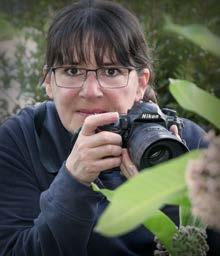
Since her childhood, Danielle has been a lover of nature and uses it fully to recharge her batteries and to meditate when life goes too fast. She is also a mentor for three PPOC members. Danielle is the proud mother of two and the grandmother of three granddaughters. She can’t wait to teach them how to fish and introduce them to the wonderful world of insects!
www.daniellebarabebussieres.com/ www.facebook.com/ DanielleBBphotography/
Create an Aspiring membership profile by following the links to join at www.ppoc.ca, and activate that membership with payment in full online, or by contacting us by phone at (888) 643-PPOC (7762) to set up a convenient monthly payment plan using your VISA or MasterCard.
Apply TODAY!
https://ppoc.formstack.com/forms/ membership_application_web
CONTACT
1-888-643-PPOC (7762)
Phone: 519-537-2555
Info@ppoc.ca | www.ppoc.ca
MAILING ADDRESS: 209 Light St. Woodstock, ON N4S 6H6 Canada
SPRING 2022 | GALLERIE MAGAZINE | 36
Bohemian Rhapsody, final image
Bohemian Rhapsody, original image
MY PPOC
NEW BEGINNINGS
By Kayla Gordon
I BECAME A MEMBER OF PPOC ONE YEAR AGO IN APRIL 2021. I JOINED ON A THURSDAY, AND THEN ON FRIDAY I STARTED TO HAVE SECOND THOUGHTS, SO, I CALLED MARY CHISHOLM AT THE PPOC OFFICE AND ASKED HER WHAT WOULD HAPPEN IF I DECIDED NOT TO GO FORWARD WITH MY MEMBERSHIP. SHE SAID I HAD A BIT OF TIME TO THINK ABOUT IT. I THEN CALLED BECKY FLEURY, WHO IS OUR MANITOBA CHAIR. I TAUGHT BECKY WHEN I WAS A HIGH SCHOOL DRAMA TEACHER BACK IN THE LATE 80’S. WE BUMPED INTO EACH OTHER A FEW YEARS BACK AND REALIZED WE BOTH SHARE A COMMON LOVE OF PHOTOGRAPHY.
There were so many details to learn. Then, Becky introduced me to review night, which is when Manitoba PPOC members get together over Zoom to critique your work. I was ready to start the process. The toughest part was deciding which accreditation category I should tackle. I knew in my heart from many years of working as a director in the theatre that my strength was telling stories, I really wanted to do Street Photography, but it was a very new category. I had lots of photos I had taken from various shows I had produced, I thought why not try the Performing Artist category?
an accredited photographer with PPOC, I could enter the Spring, PPOC 2022 National Image Competition. I submitted four of my favourite images. Results: one not accepted, one accepted and two merits. Not bad for this PPOC newbie.
I want to thank all those who helped me get to this point. It wasn’t easy, it’s stressful hearing the judges pick apart your photos, but it’s also creatively invigorating. This has gotten me through the pandemic! What’s next…. I’m not sure. Maybe I’ll go for an accreditation in character portraits so I can tell more stories.
I had been interested in taking photos since I was fifteen. My father dabbled in it; he had a dark room in the basement of our home in Winnipeg. Fast forward a few years and I became the resident family photographer. Every time we had a family dinner or celebration it was, “Kayla, do you have your camera? Take a picture!” Anyway, back to Becky. I told her I think I made a mistake: It’s too much work, and I’m not good enough. She said three important things to me, “Don’t Quit, Ask for Help, and Get Involved”.
I decided not to ask for my money back, and I would forge ahead. At least I would give it a solid try. I began to look closer at the website and discovered the mentor program. I contacted another PPOC member, Gerald David, who responded “sure I’d be happy to look at your photos.” I wanted to take a stab at my first accreditation, and he would also help guide me through the technical aspects.
The review group helped me weed through about thirty photos down to my top ten with suggested edits etc. I entered these ten and six were accepted. “Not bad for your first try,” everyone said. A few months later, I was now ready to face the next accreditation deadline. I resubmitted four new Performing Artist photos. This time two were accepted, so I still had 2 left to complete the accreditation. It was becoming a long process. I did another review night, watched past videos on the PPOC website, looked at past magazines of competition images, and volunteered to shoot a few new performances in town to get some new material. I also reached out for help from Gerry Legere from the Manitoba Camera Club, which I had joined last year. His photos always wowed me. We met three times on Zoom. He was very critical, and he helped take my editing skills to the next level. I was ready once again. I submitted my last two for Performing Artist and with my newfound confidence also submitted ten Street Photography photos as well. Results: my last Performing Artist Photos were finally accepted. My Street Photos were all accepted… ten out of ten. Crazy. All my hard work and patience paid off.
What I discovered is I can tell a good story. I have been telling stories for thirty-five years in the theatre and it’s great to inject that same skill into my work as a photographer. Now that I was

I am so glad that I took Becky’s advice. “Don’t Quit, Ask for Help, and Get Involved”. I didn’t quit, I asked for a ‘ton’ of help, and now I’m on the Manitoba board and helping with social media at the national level. I’m so happy to be part of the PPOC family!
Kayla loves all types of photography but her passion is in travel, performance and street photography. She has been telling stories for thirty-five years as a theatre director and feels that it’s great to inject that same skill into her work as a photographer. While she has only been a member of the Professional Photographers of Canada for one year, she has become Nationally Accredited in two categories, Street Photography and Performing Artist. You can find her work on her website at https://kaylagordon.zenfolio. com and on Instagram at https://www.instagram.com/kaylagphoto/.

SPRING 2022 | GALLERIE MAGAZINE | 37
Kayla Gordon
Z 9. Stacked CMOS sensor.
45.7-megapixels.
Full frame. Designed by Nikon specifically to bring ultra-high-resolution image quality to high-speed shooting applications. Achieves the world’s fastest scanning speed1, 12x faster data readout than the acclaimed Z 7II and absolutely spectacular image quality in stills and 8K videos.
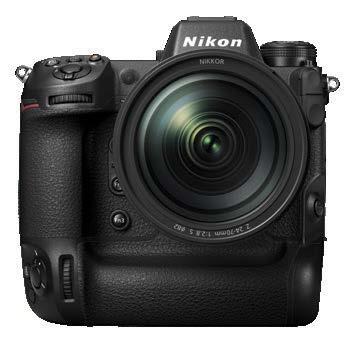

1 Among mirrorless cameras incorporating an image sensor with 30 megapixels or larger as of October 28, 2021, based on Nikon research.
www.nikon.ca/z9
©MICHAEL FAYEHUN








 By Lana Polic
By Lana Polic


 By Niel van Niekerk
By Niel van Niekerk

 By Charles van den Ouden, HLM, MPA, SPA
By Charles van den Ouden, HLM, MPA, SPA









 By Lana Polic
By Lana Polic


















 Lisa Langell Scottsdale, Arizona
Lisa Langell Scottsdale, Arizona












































































